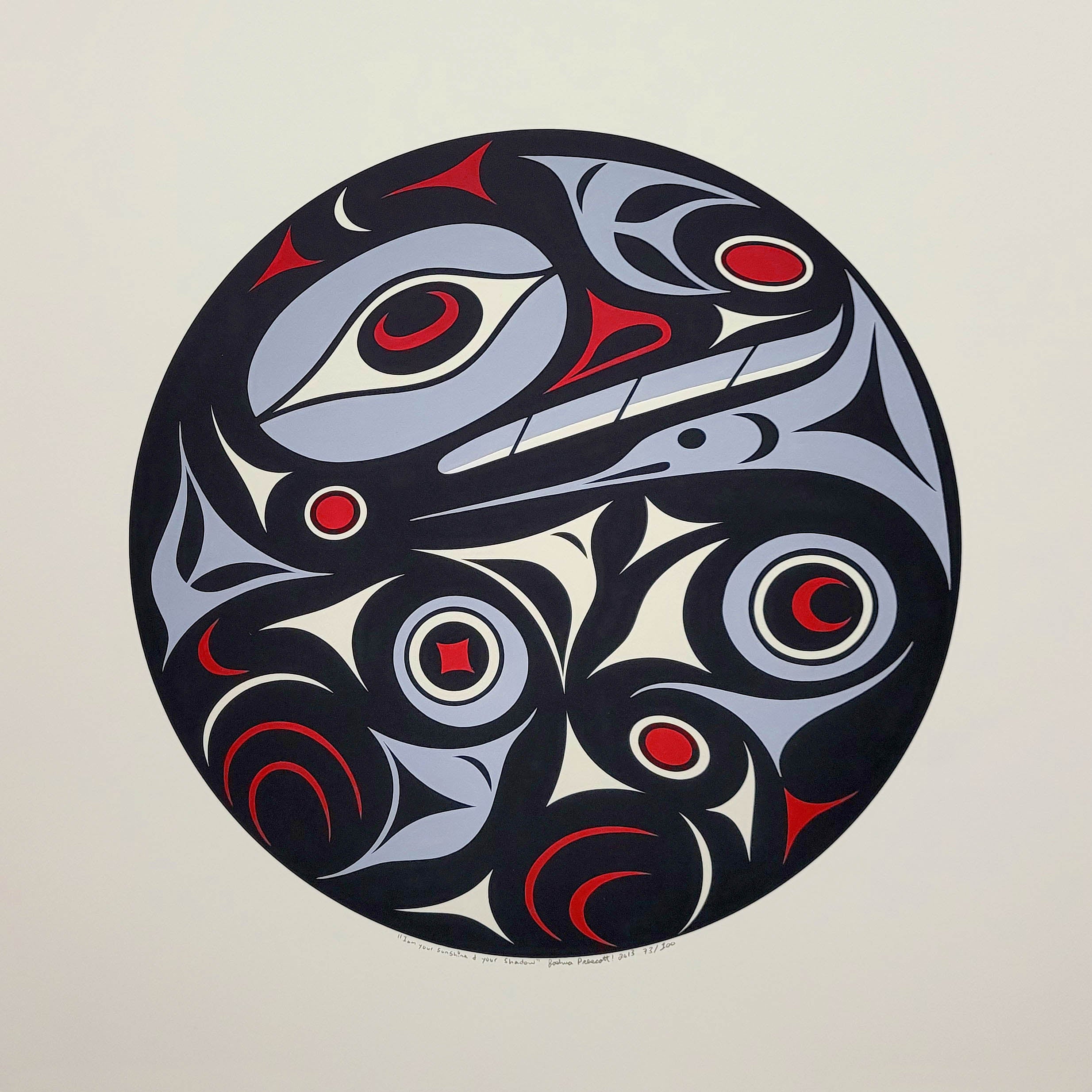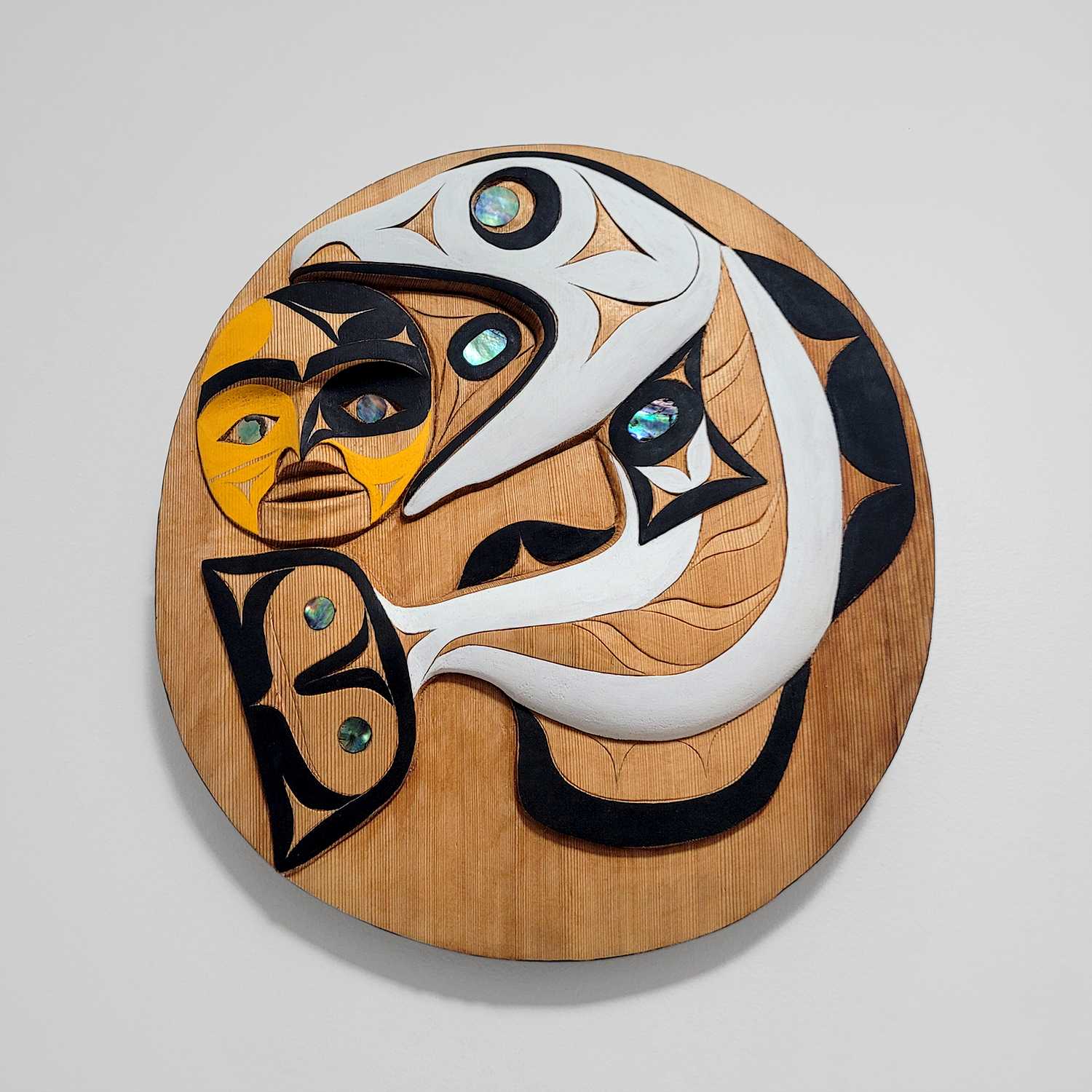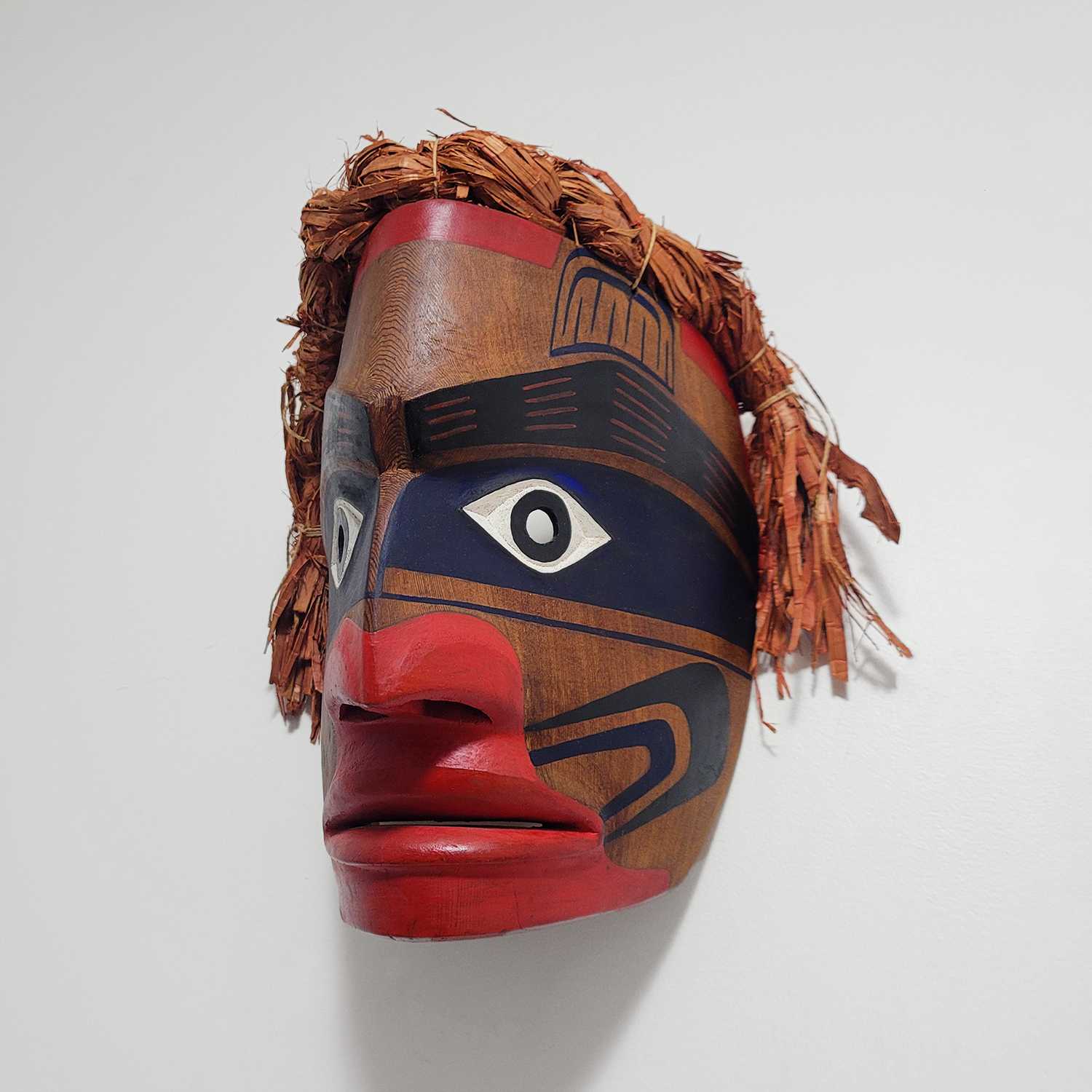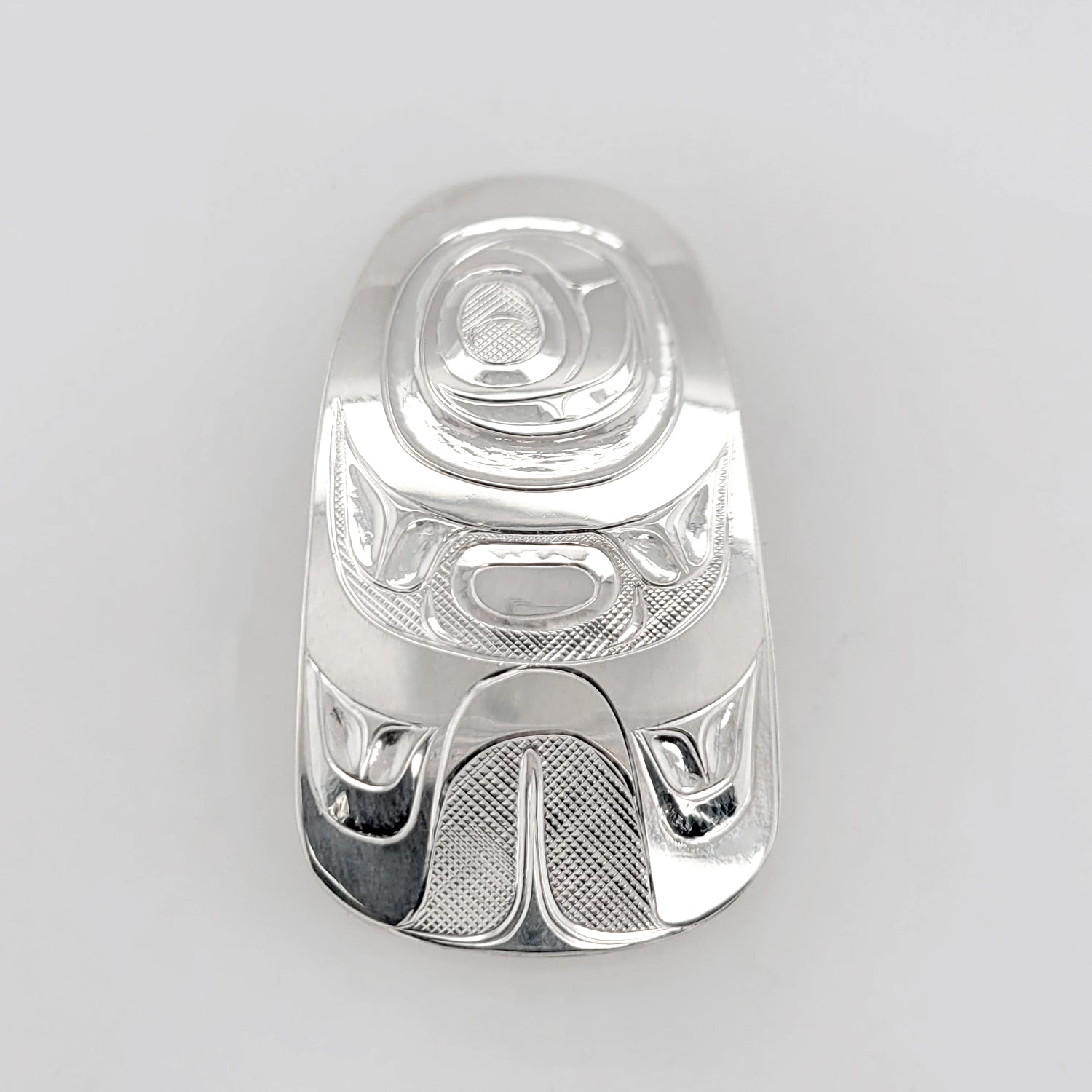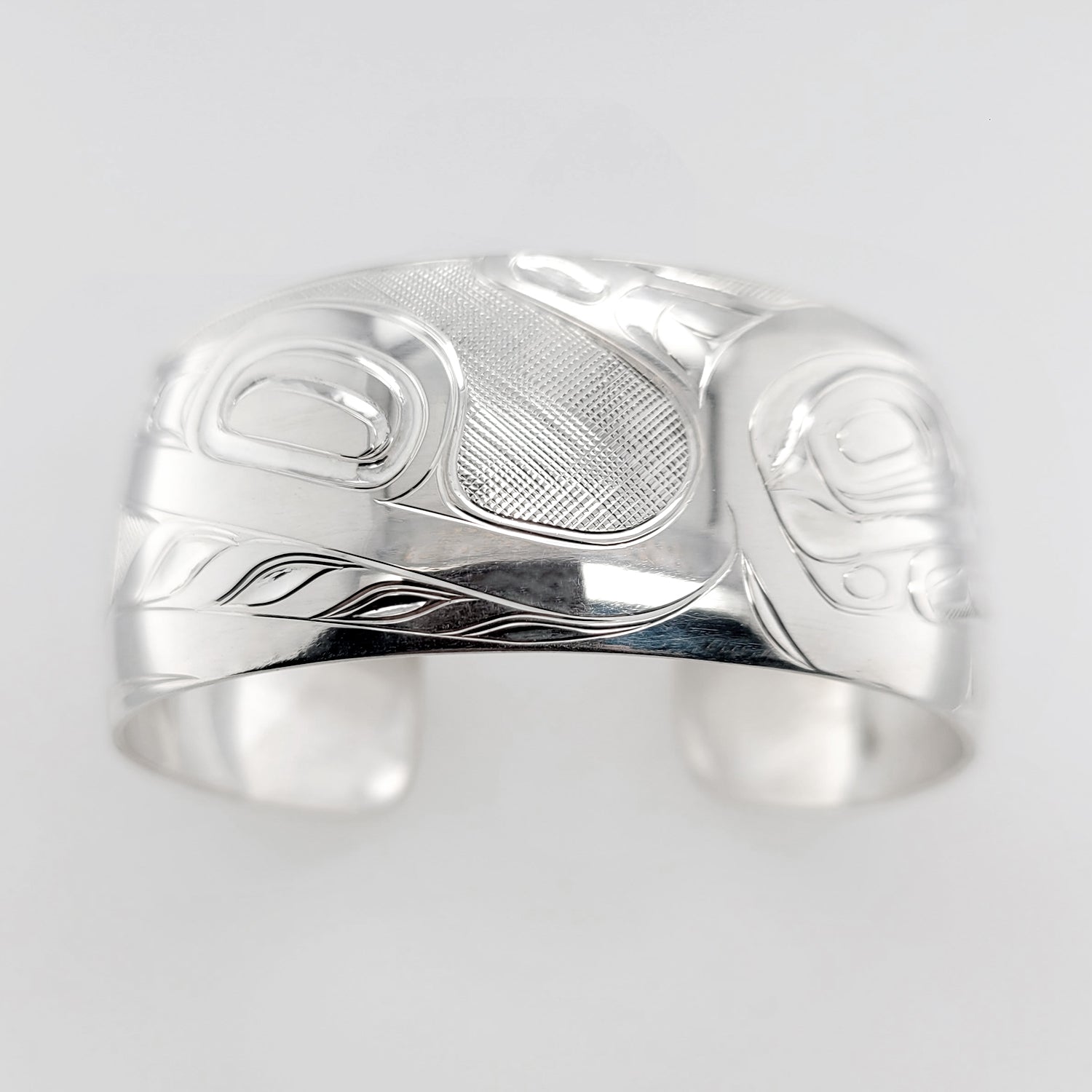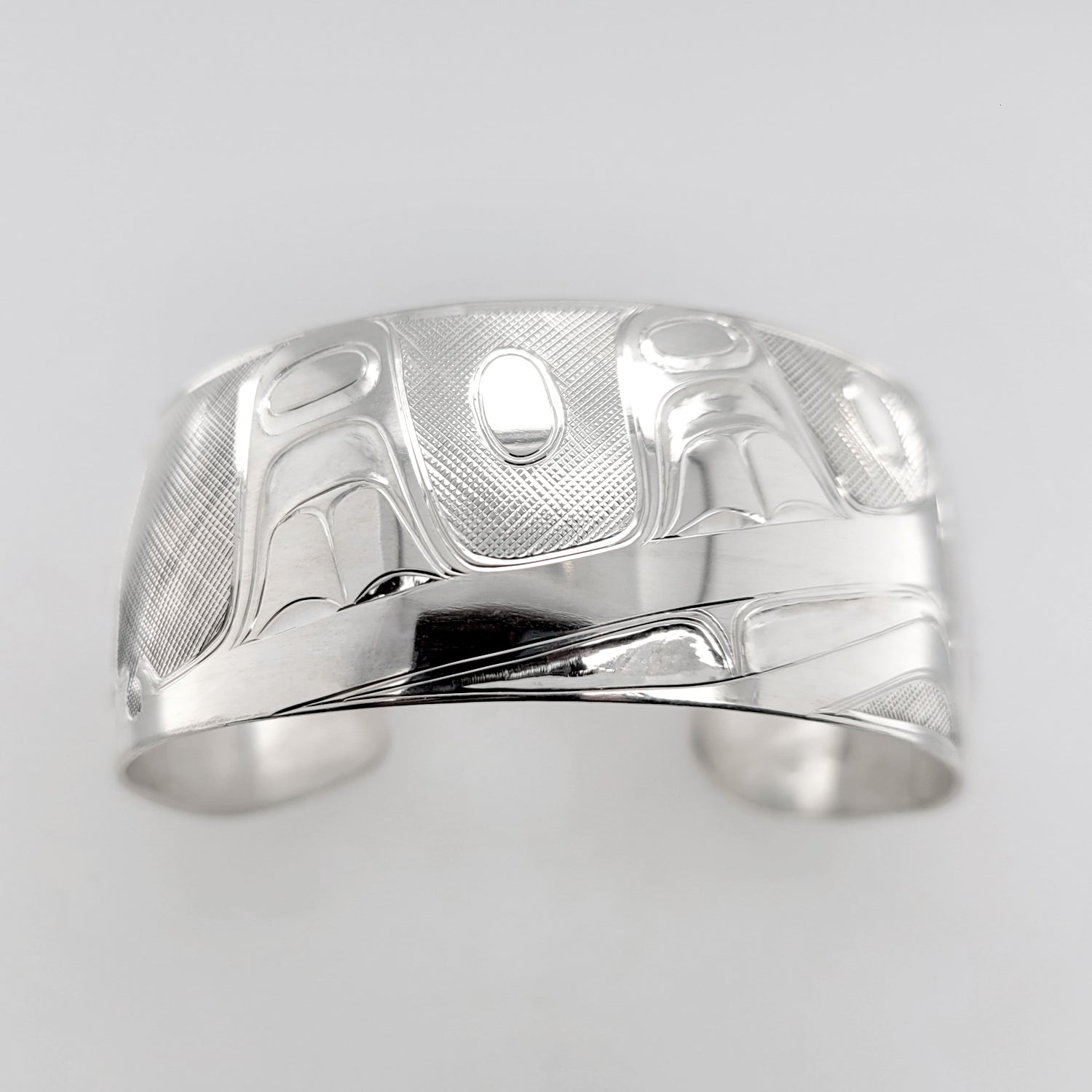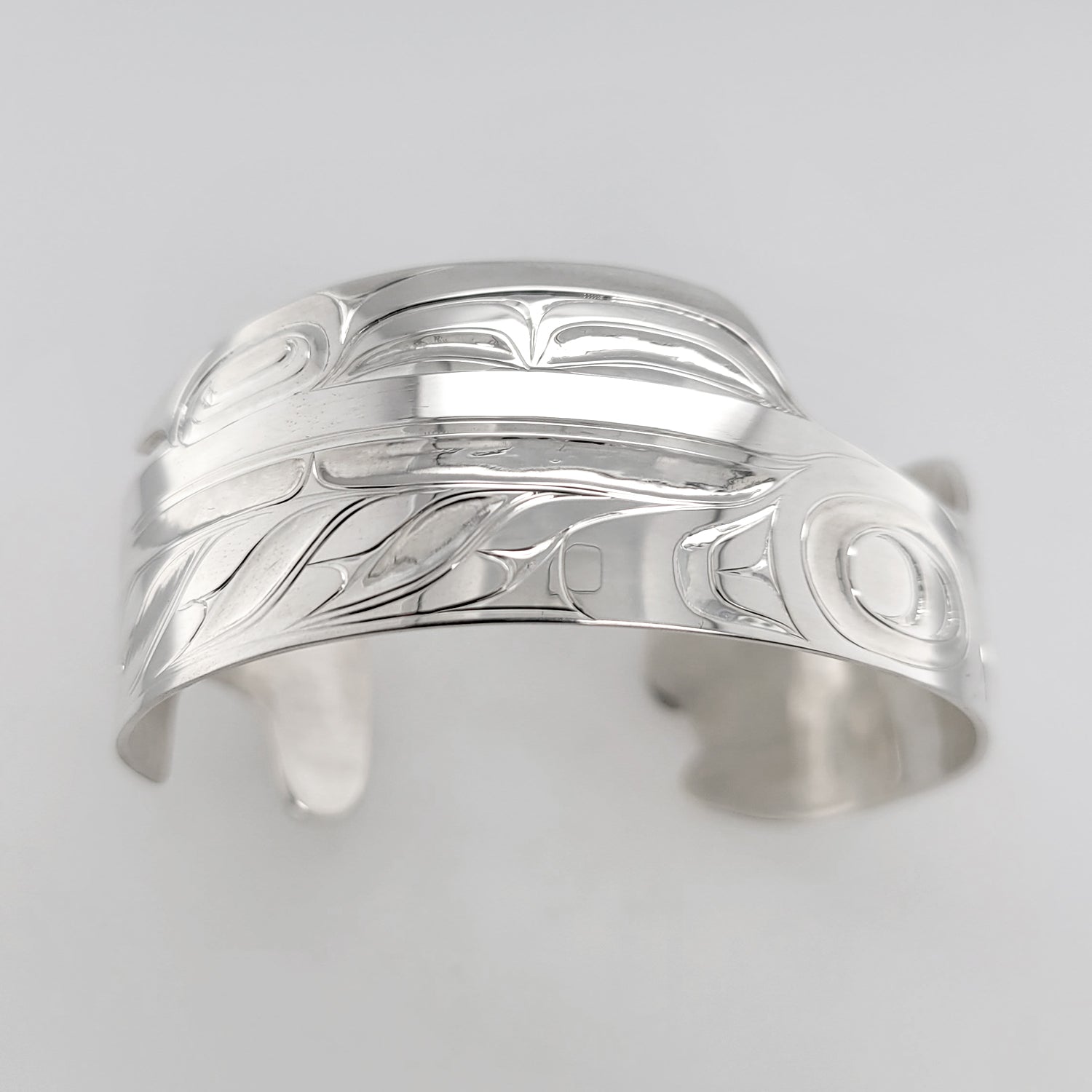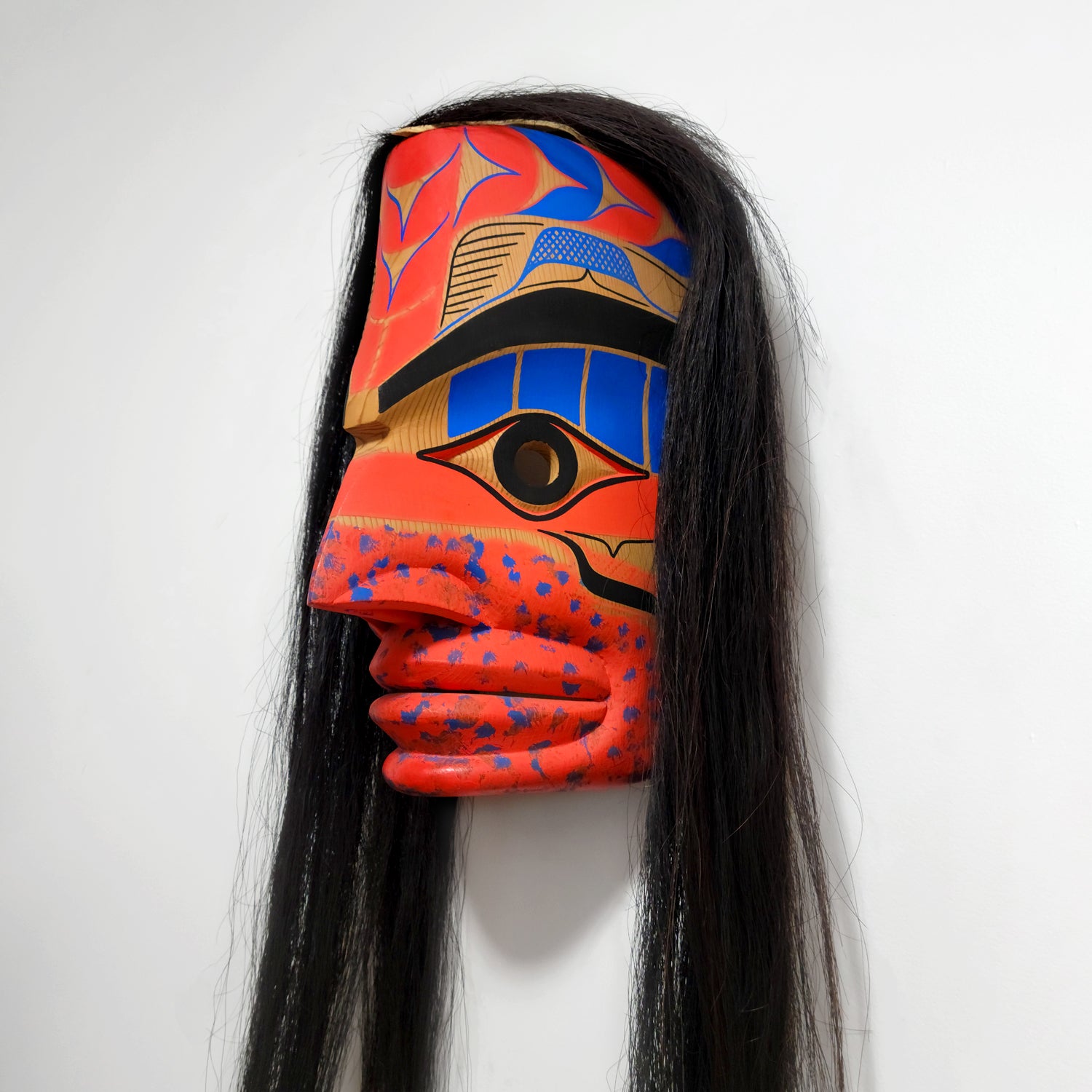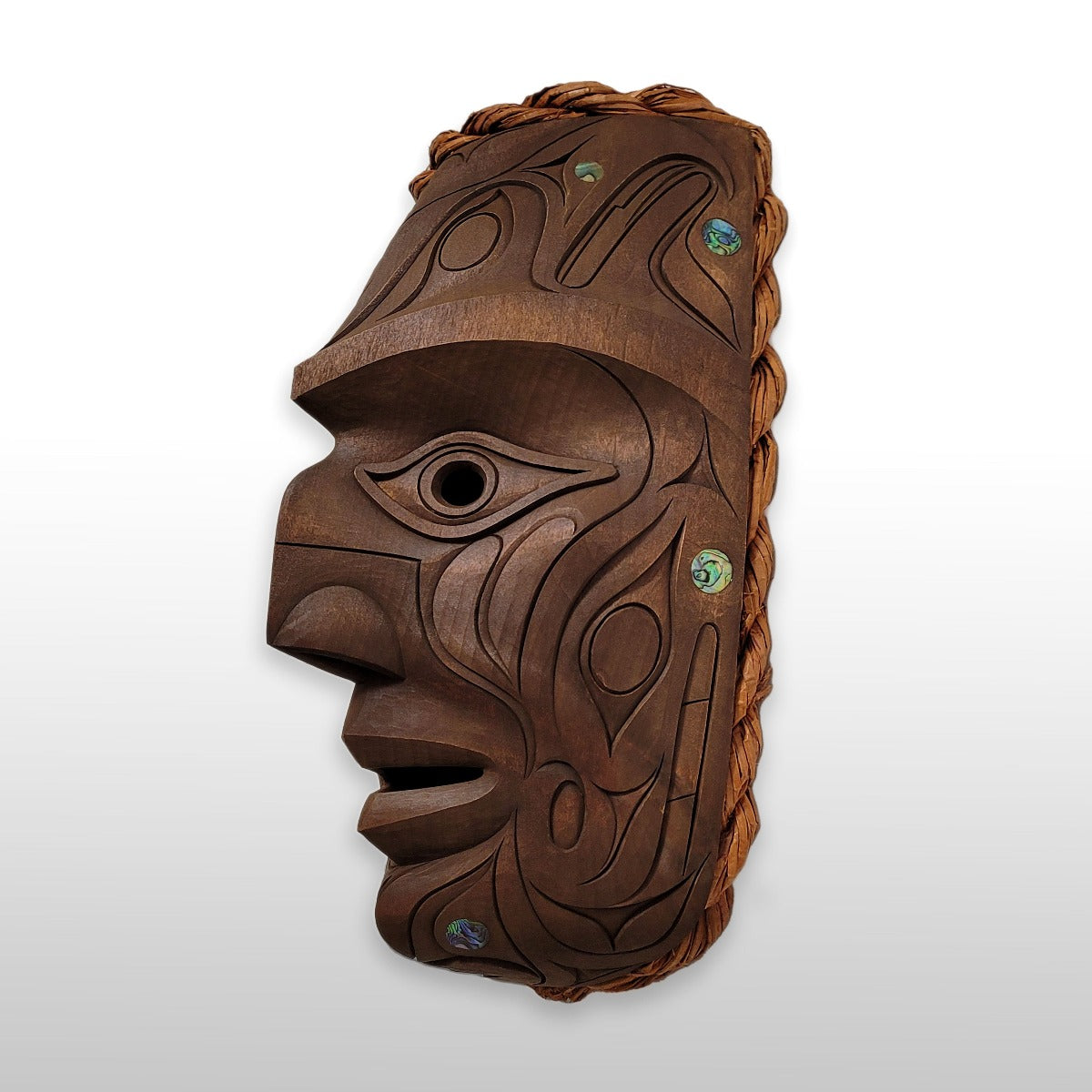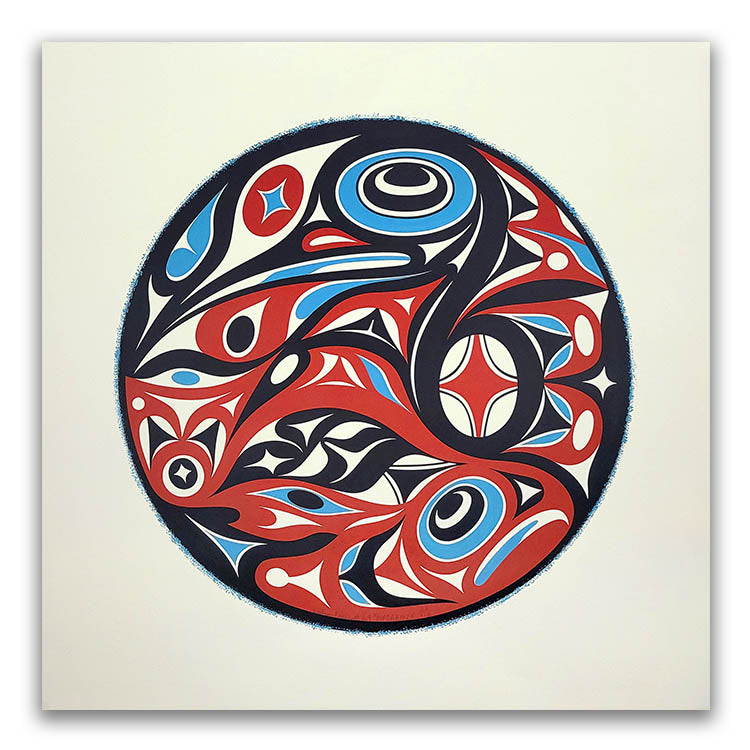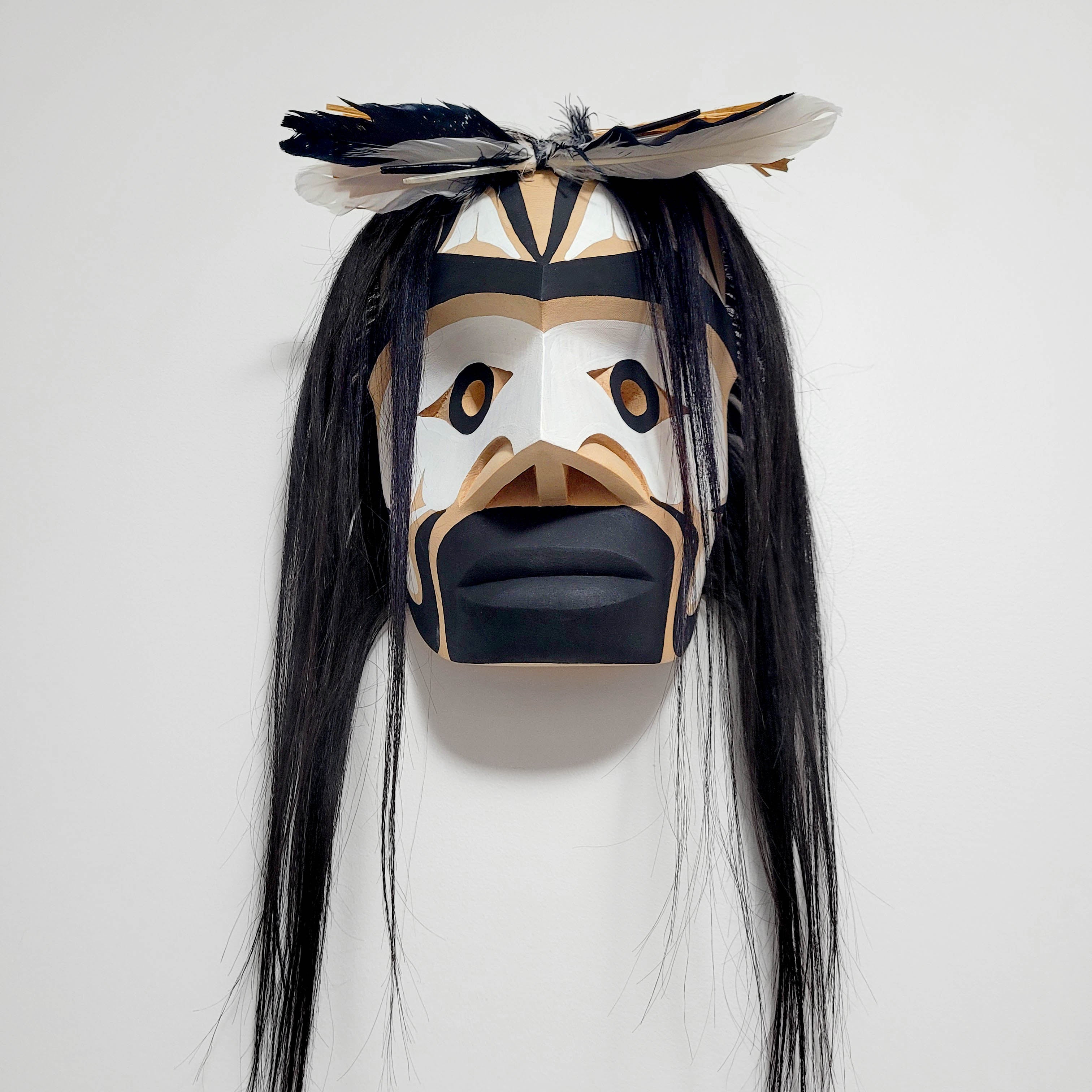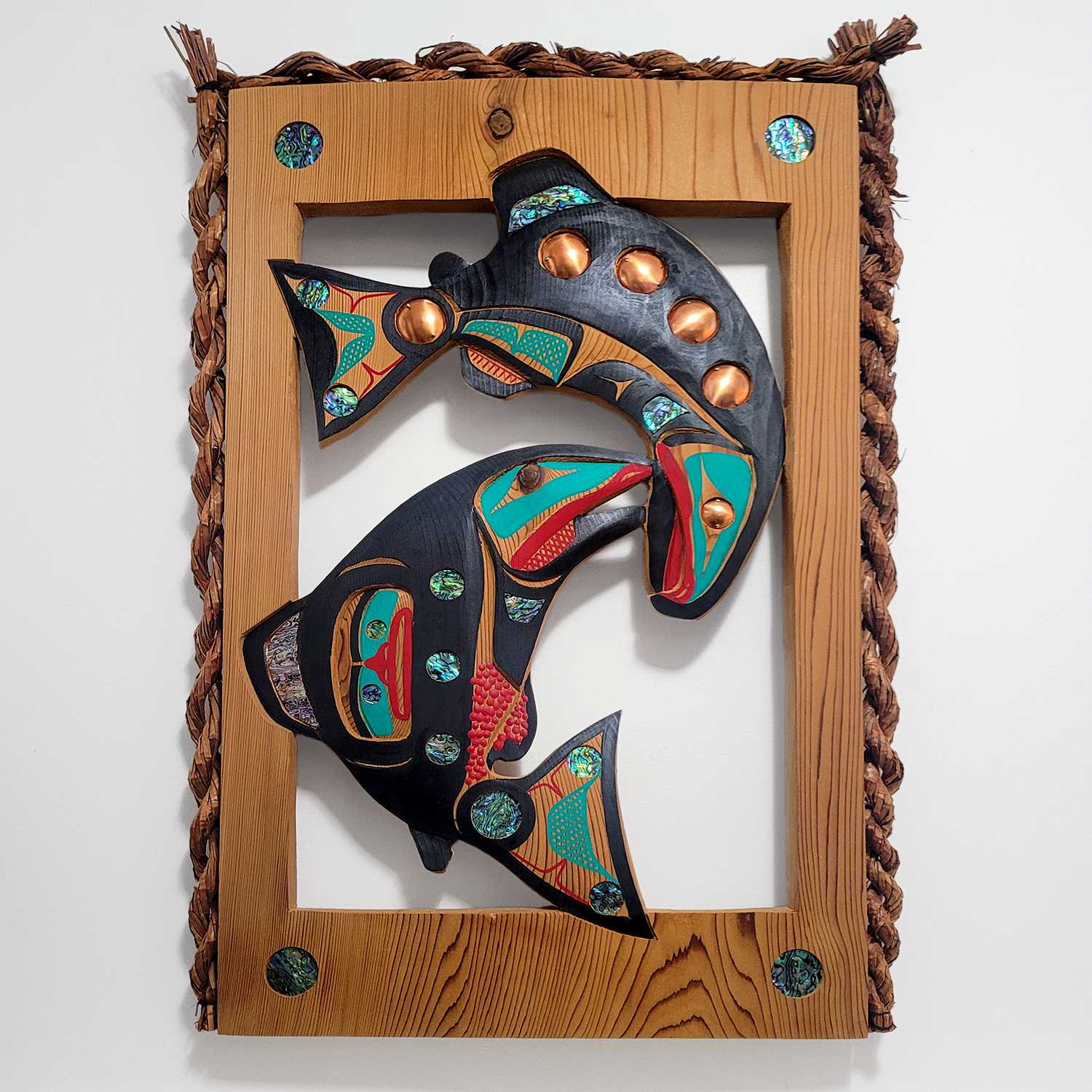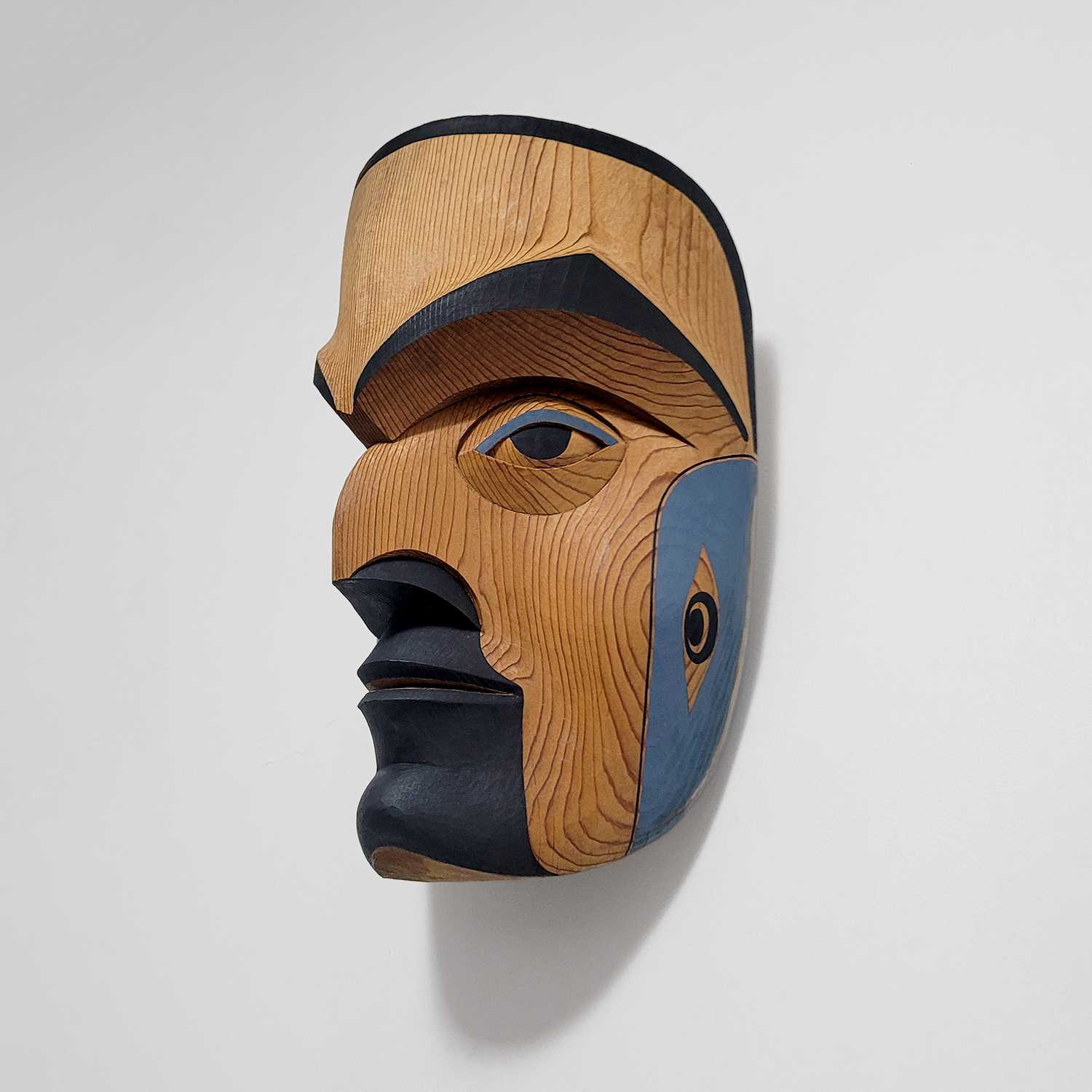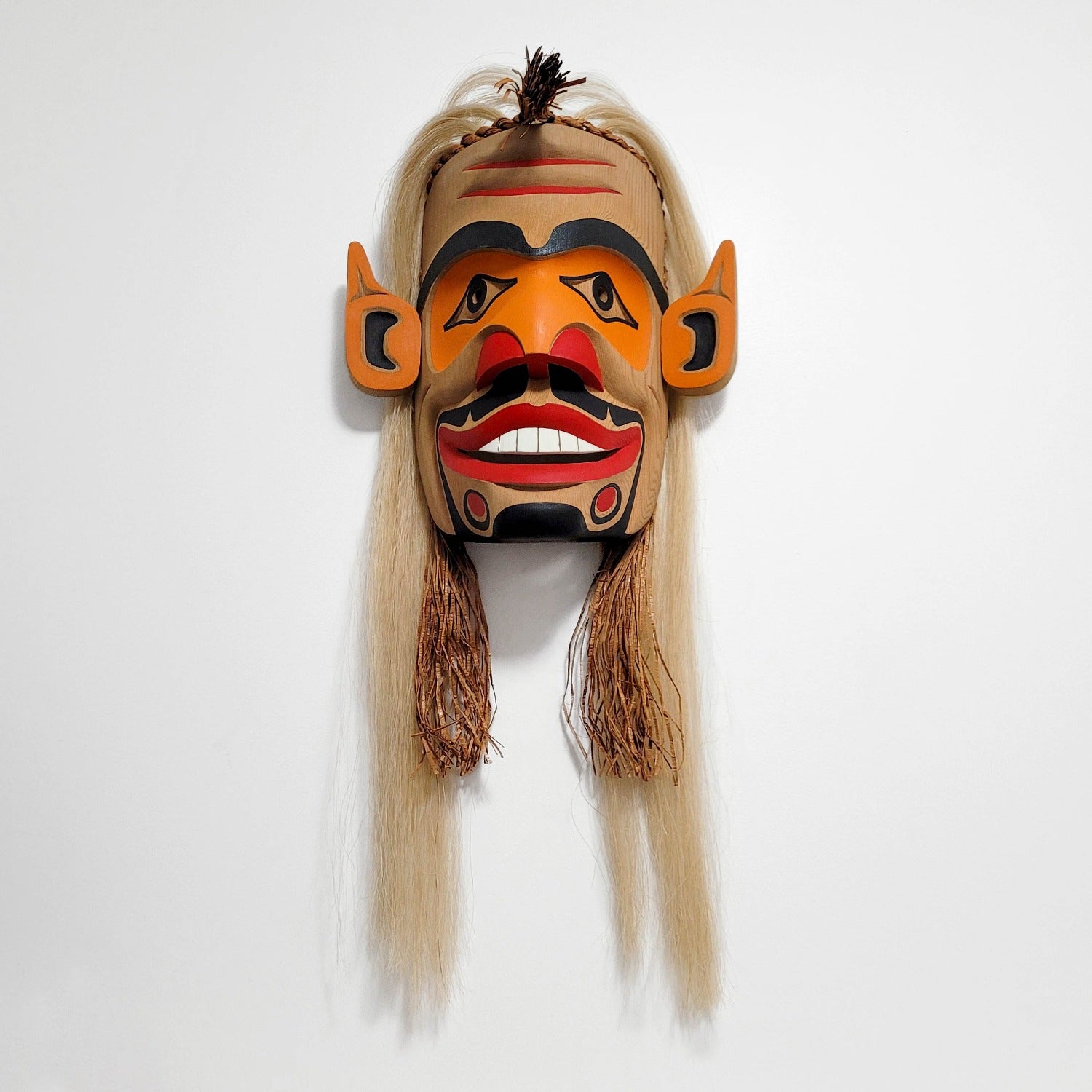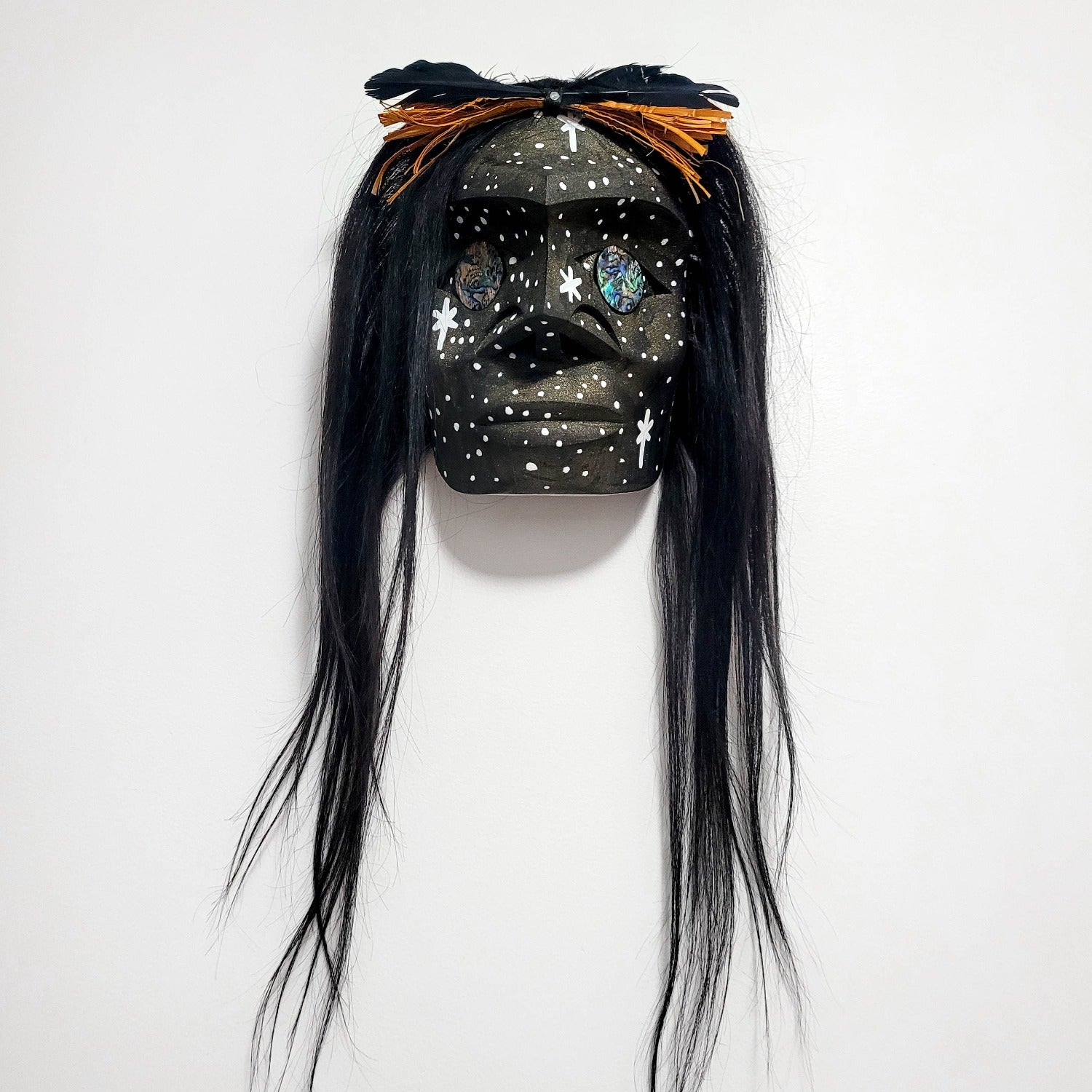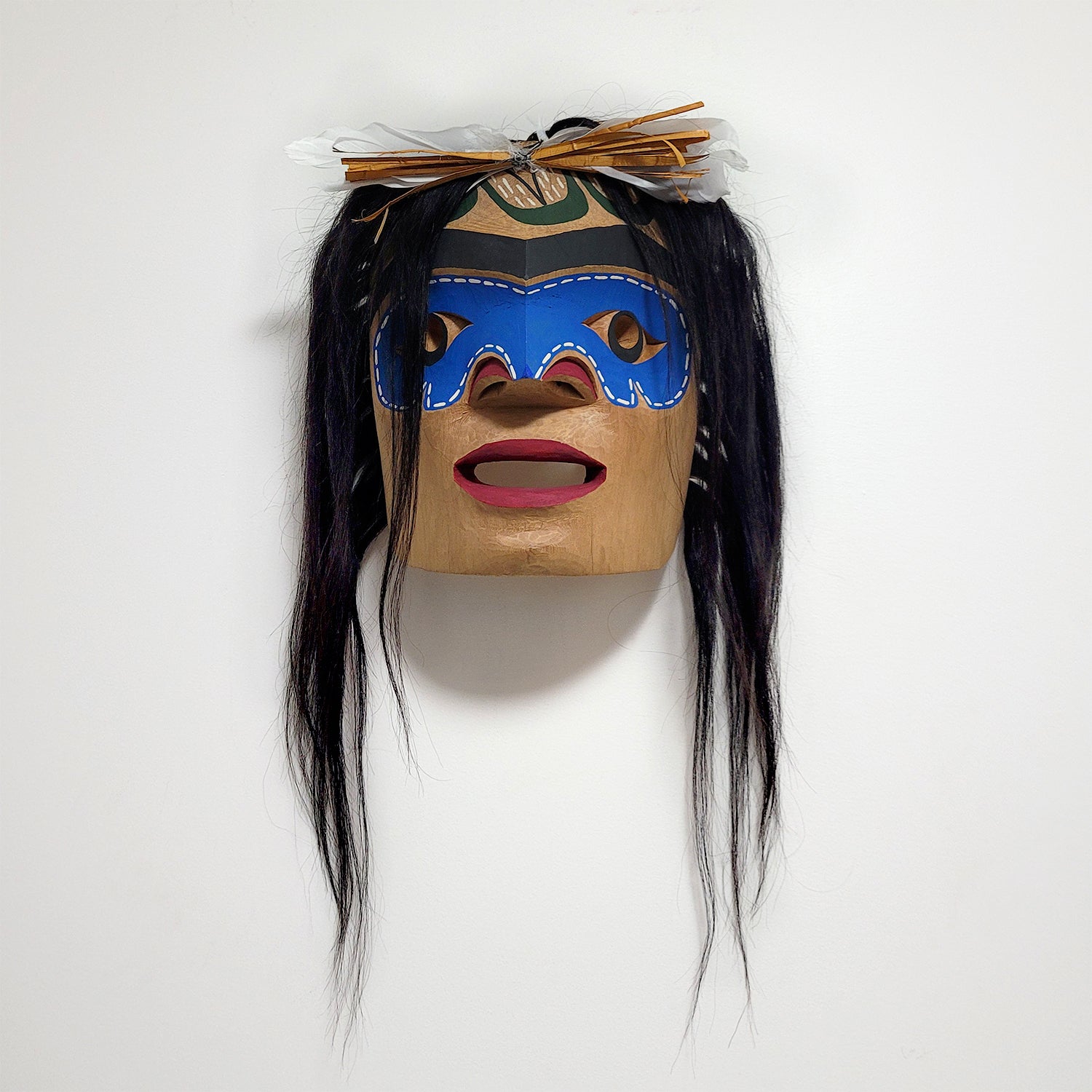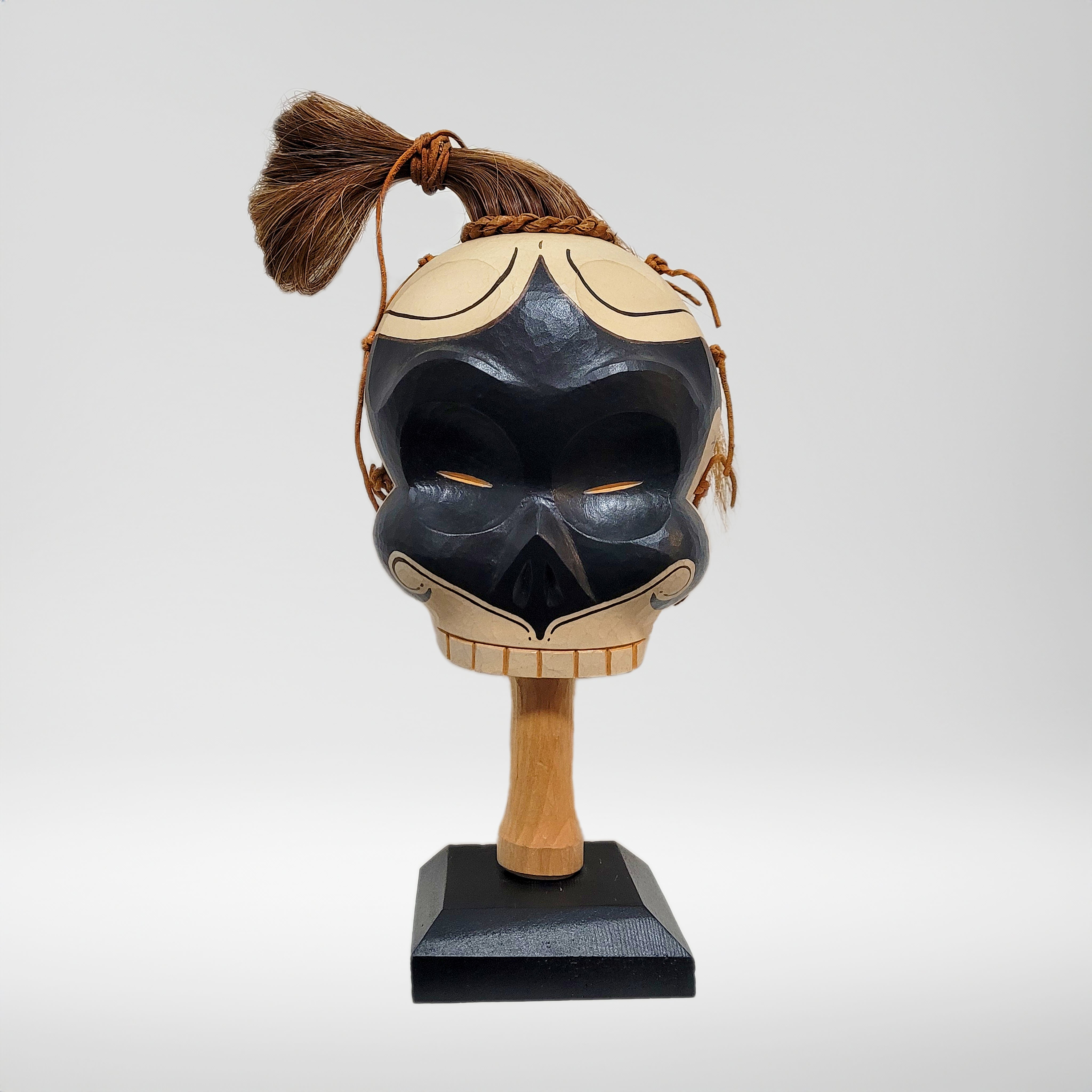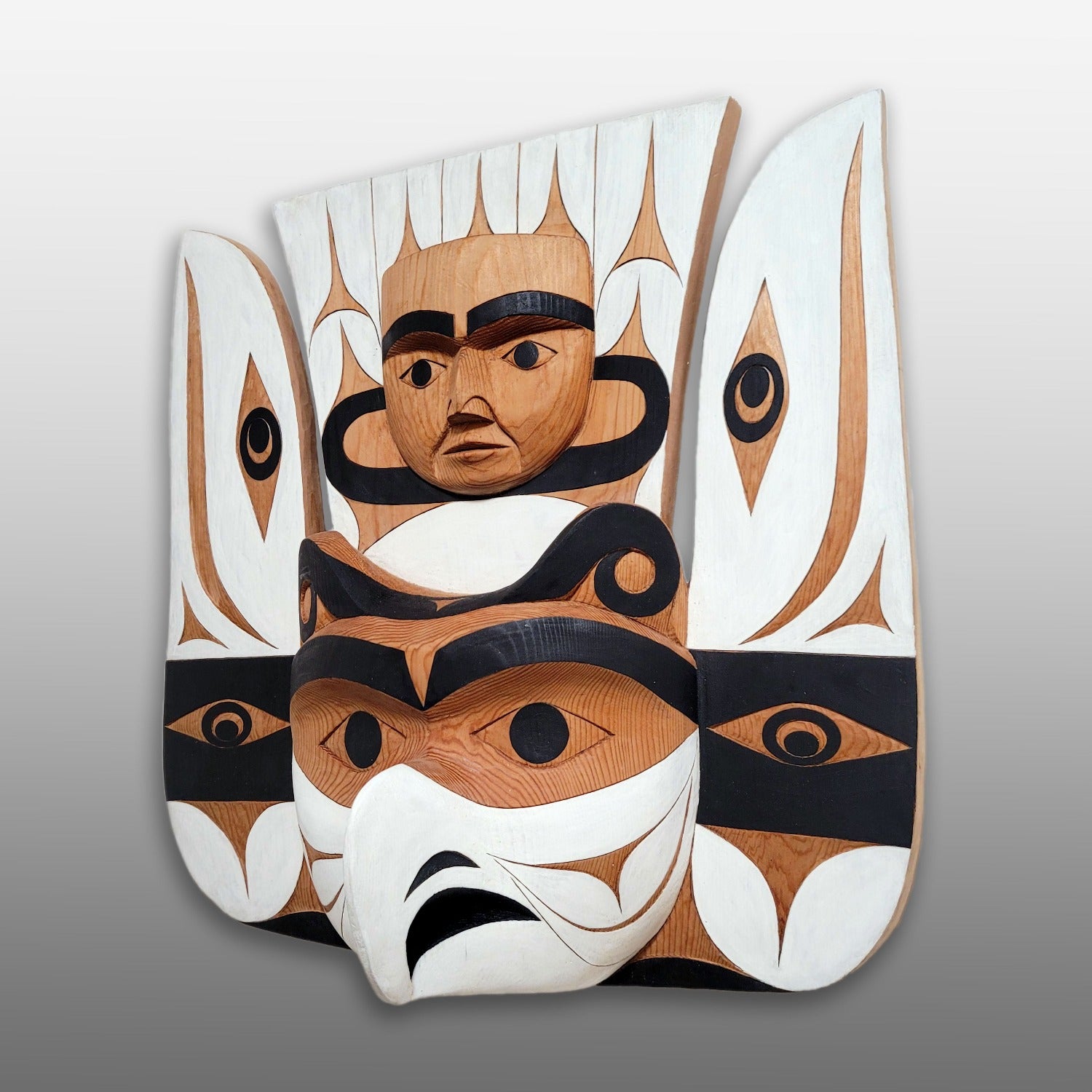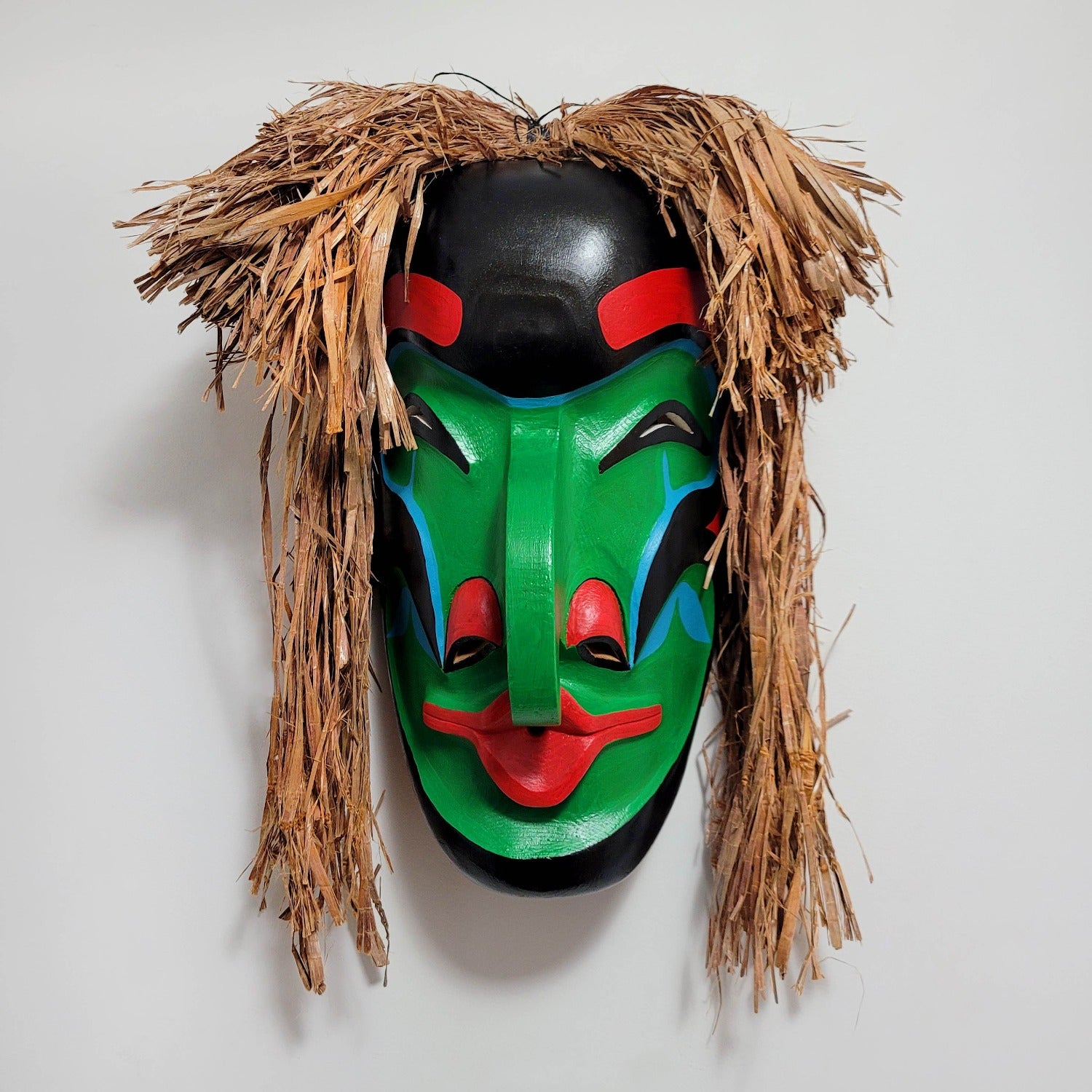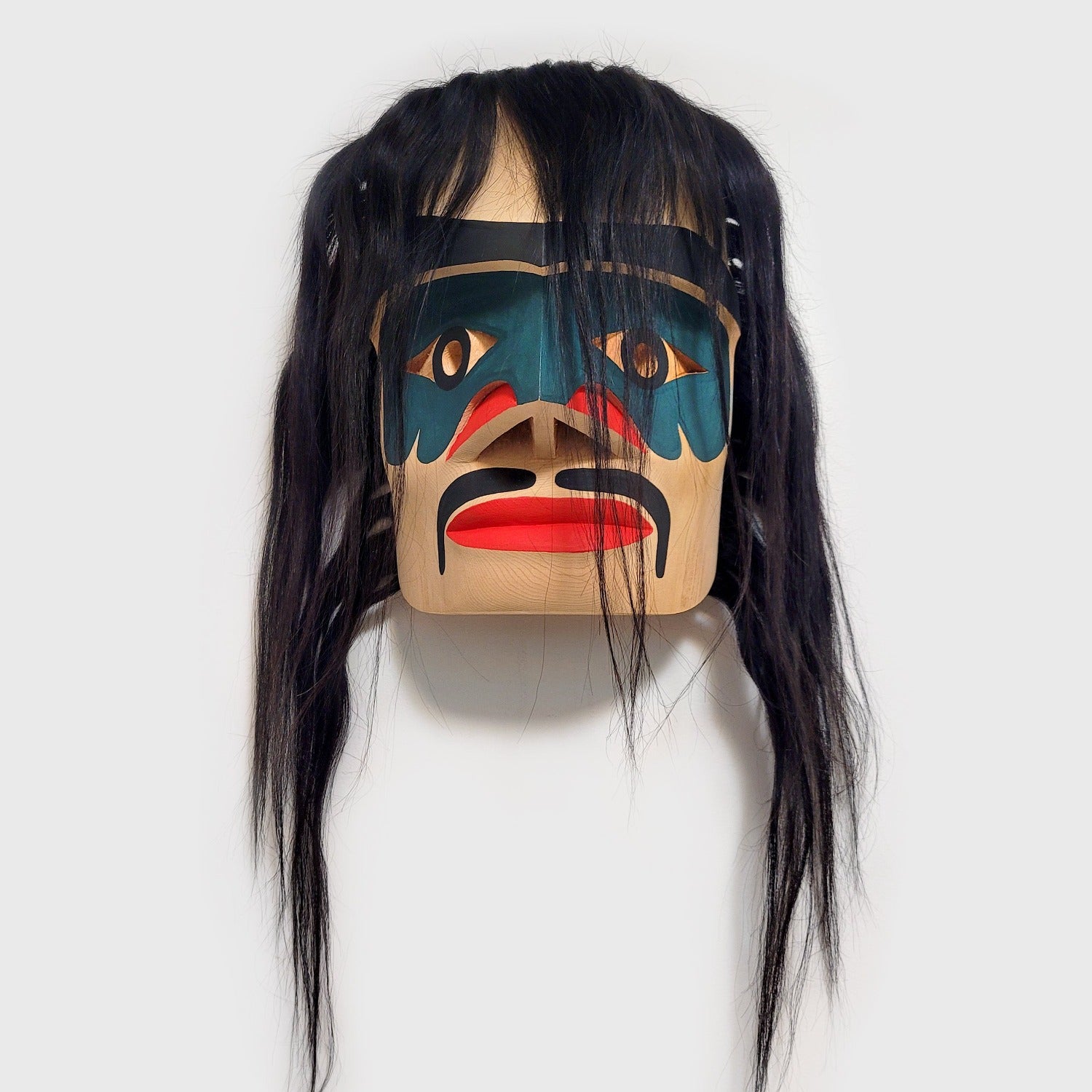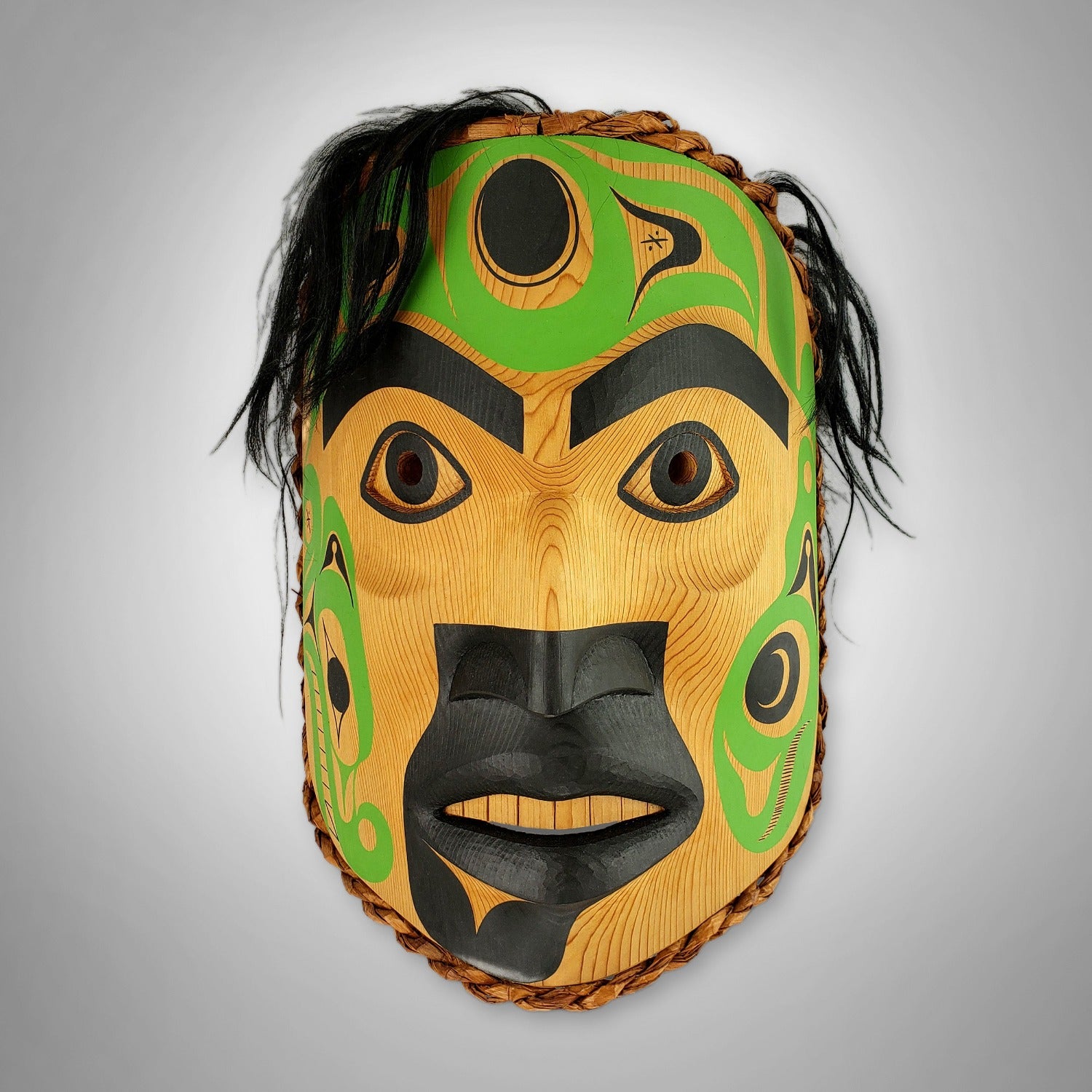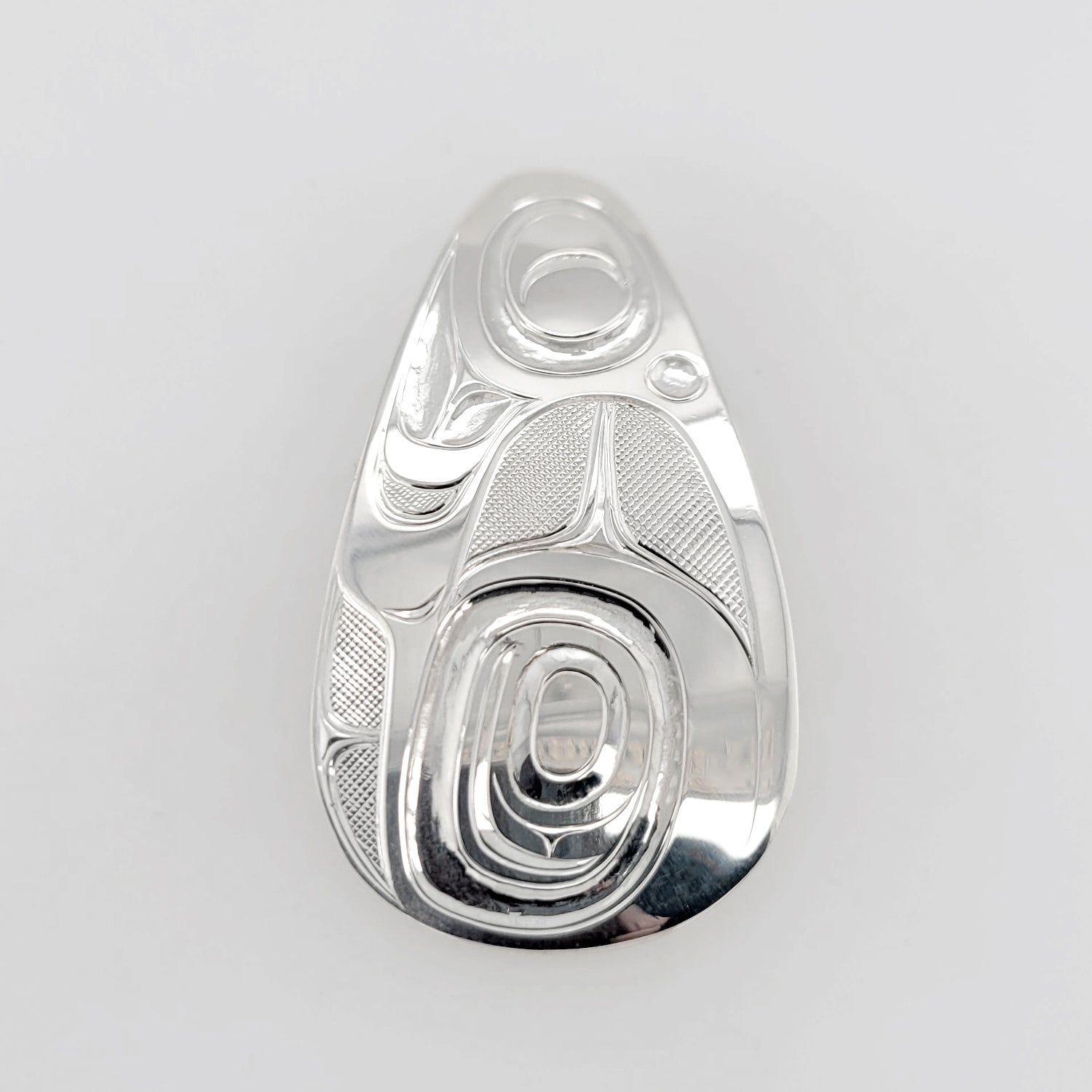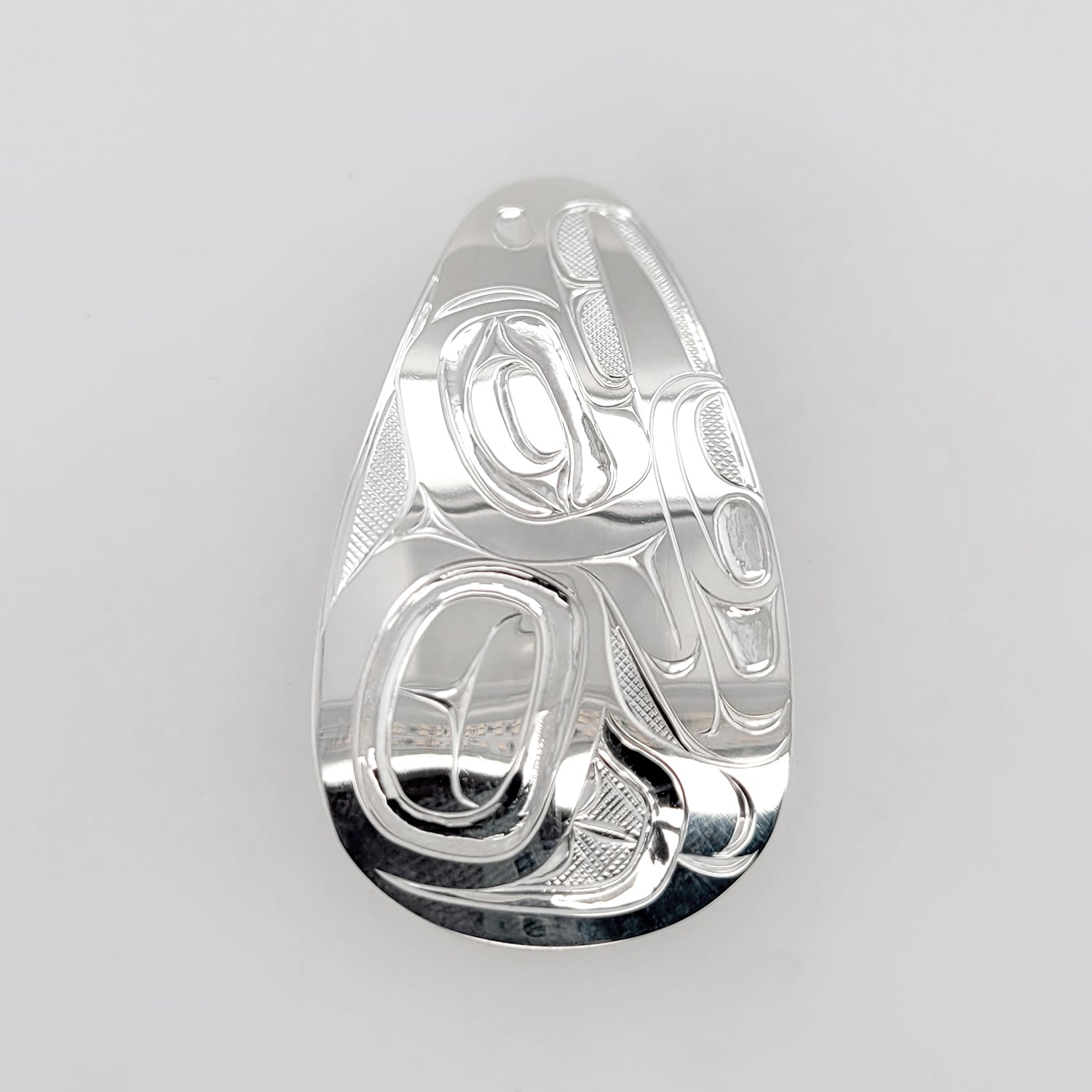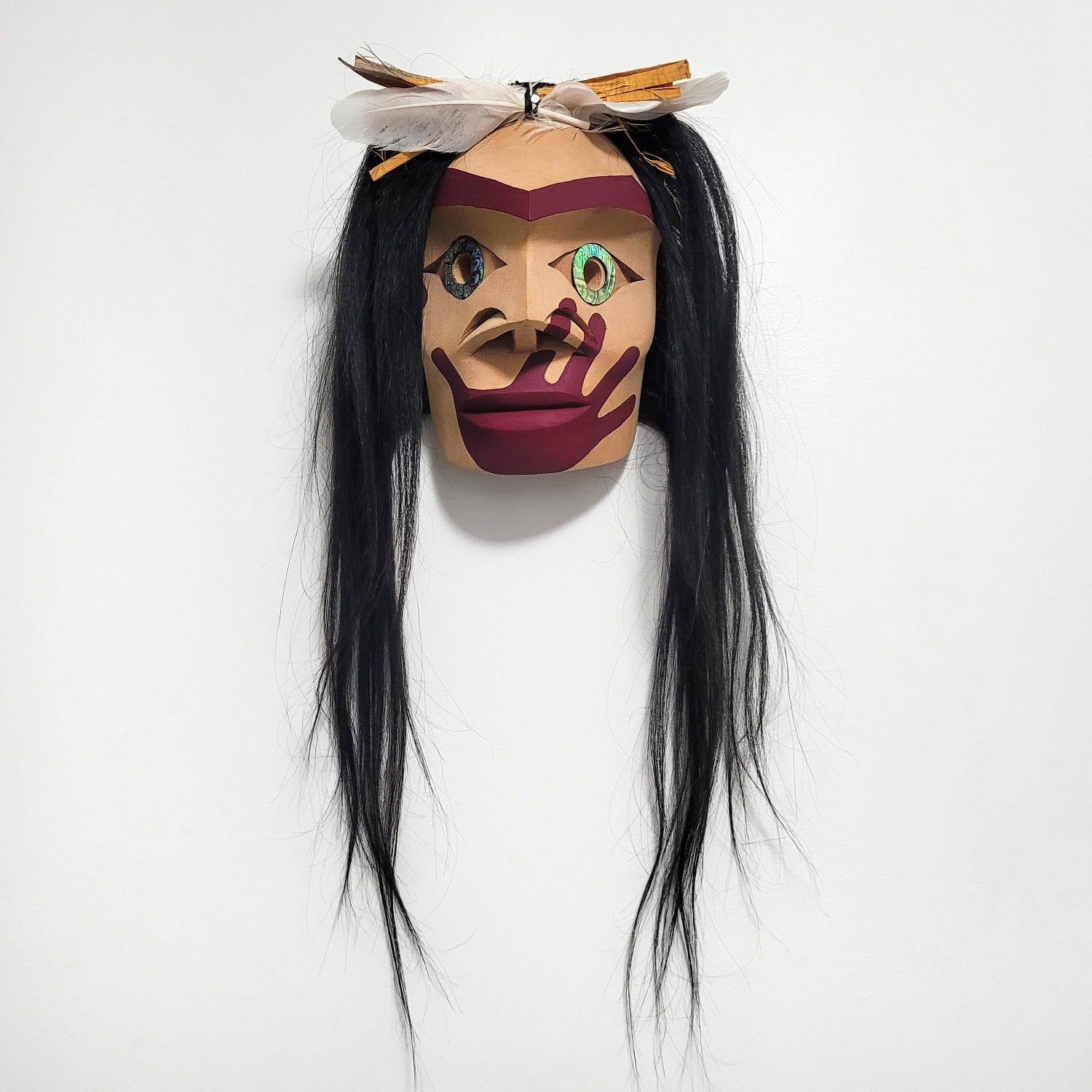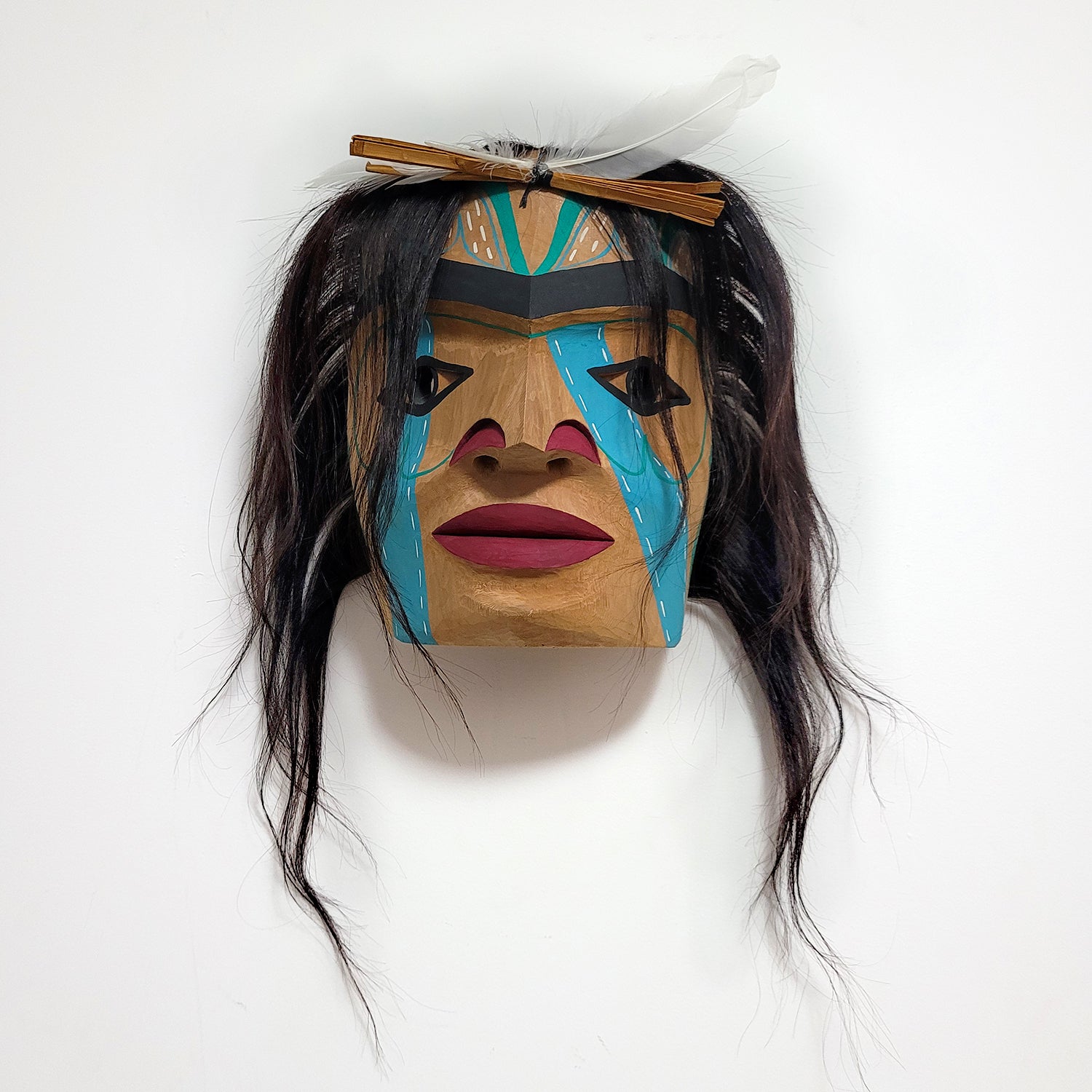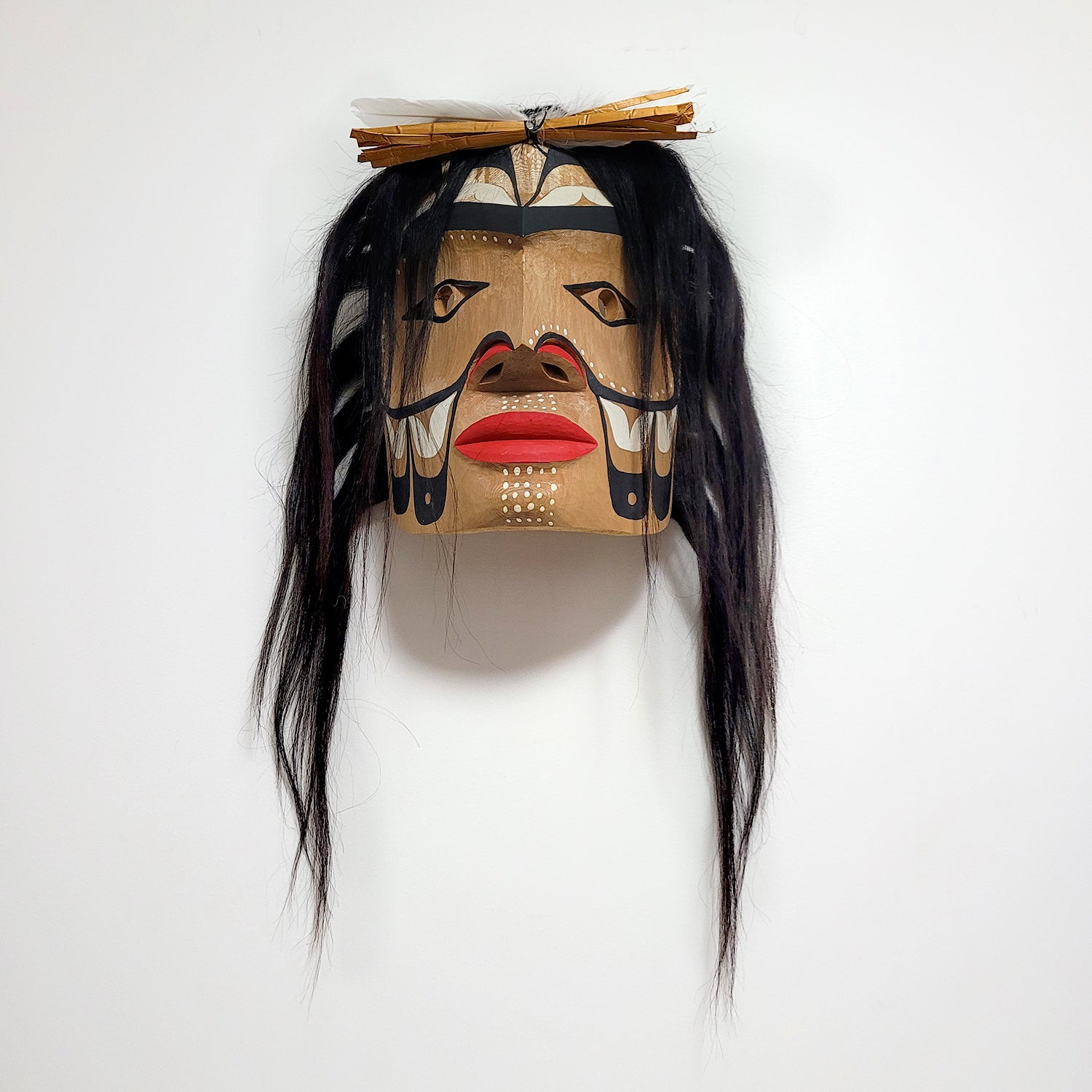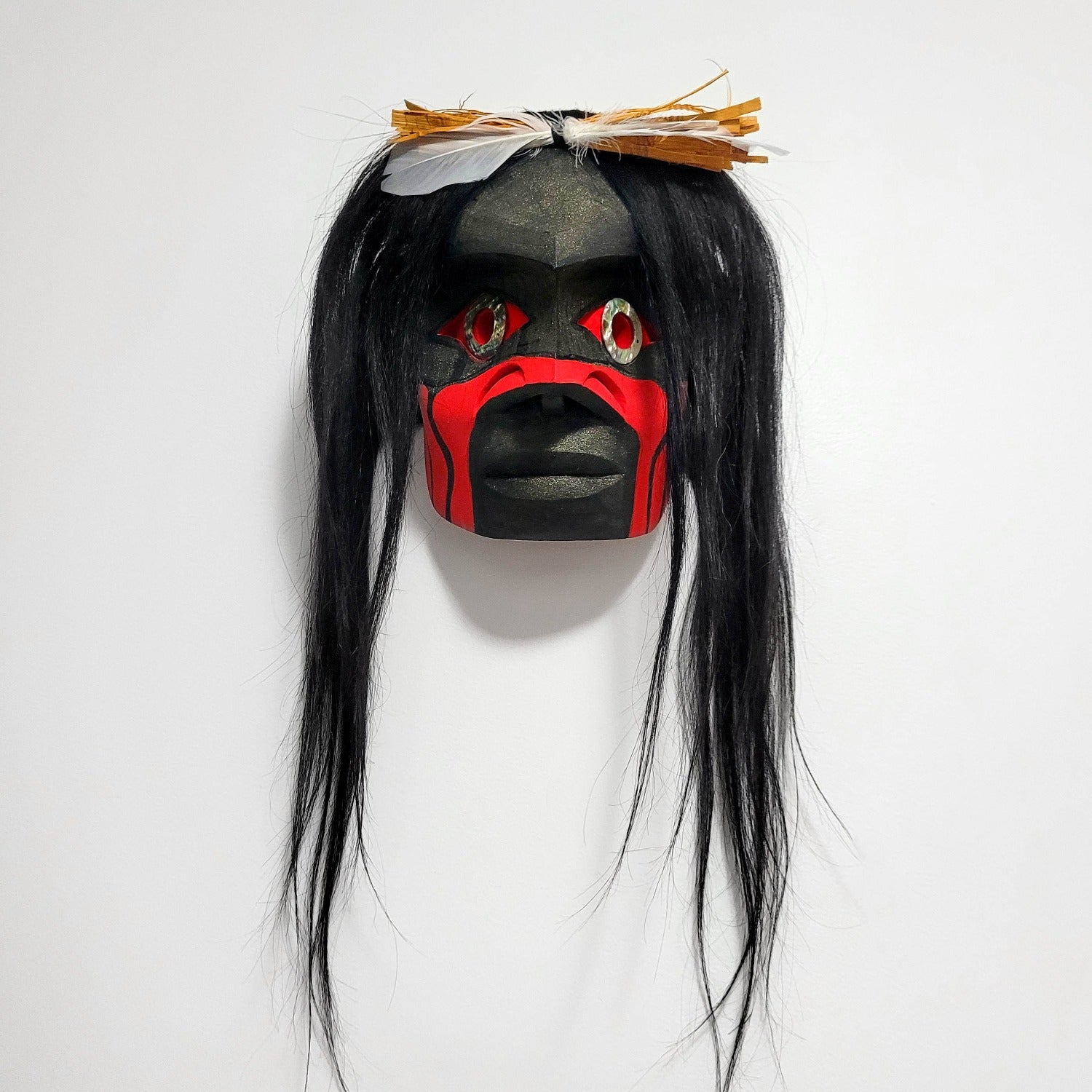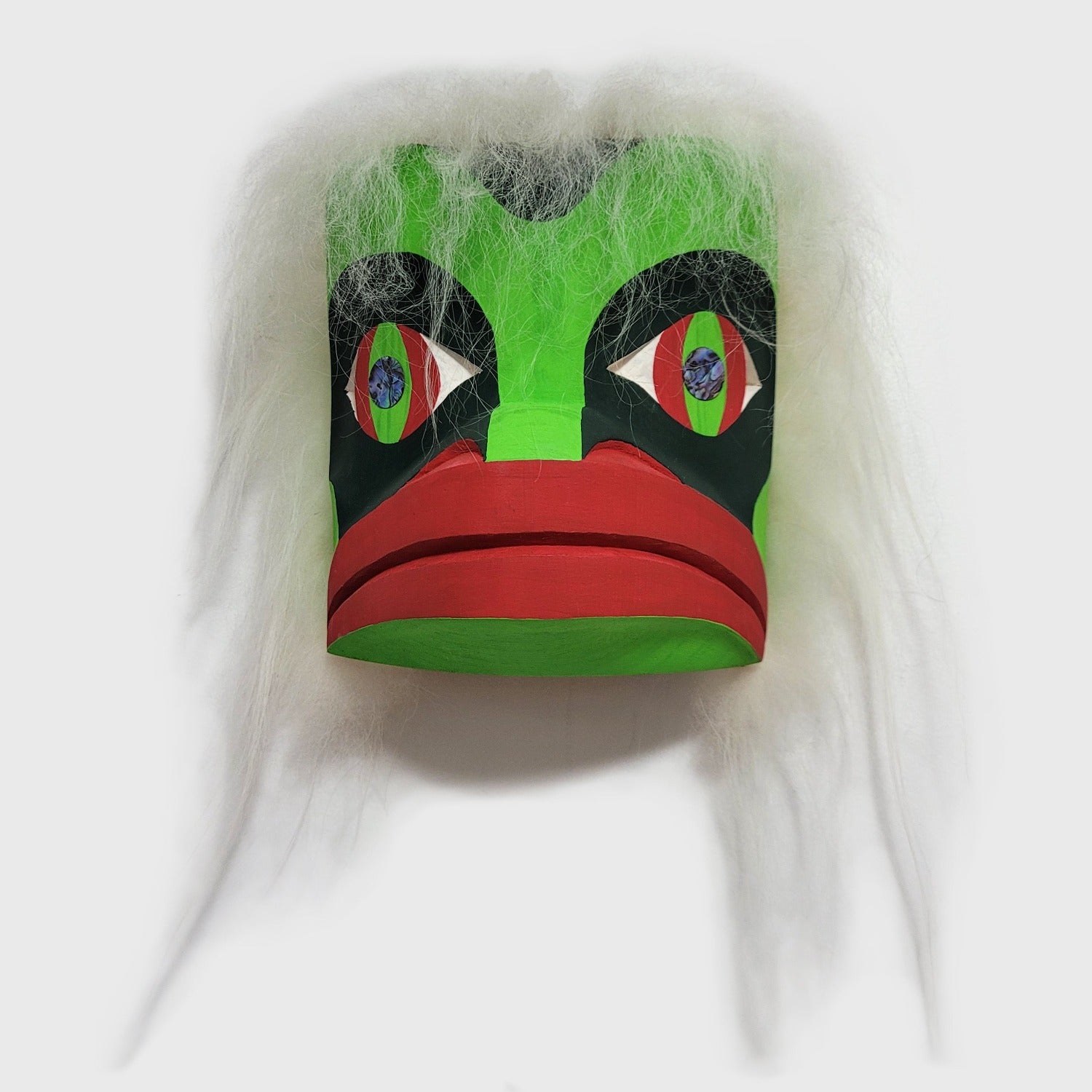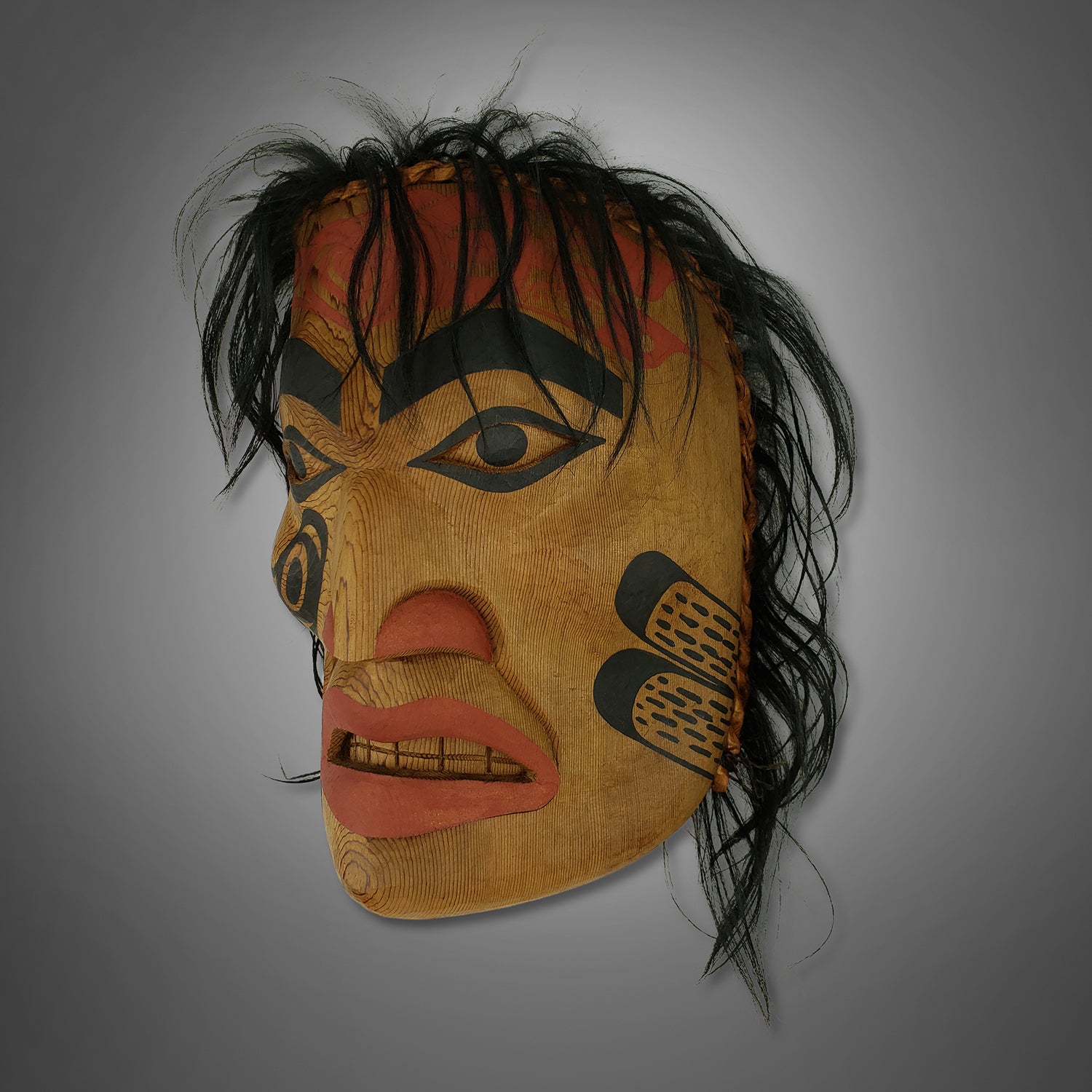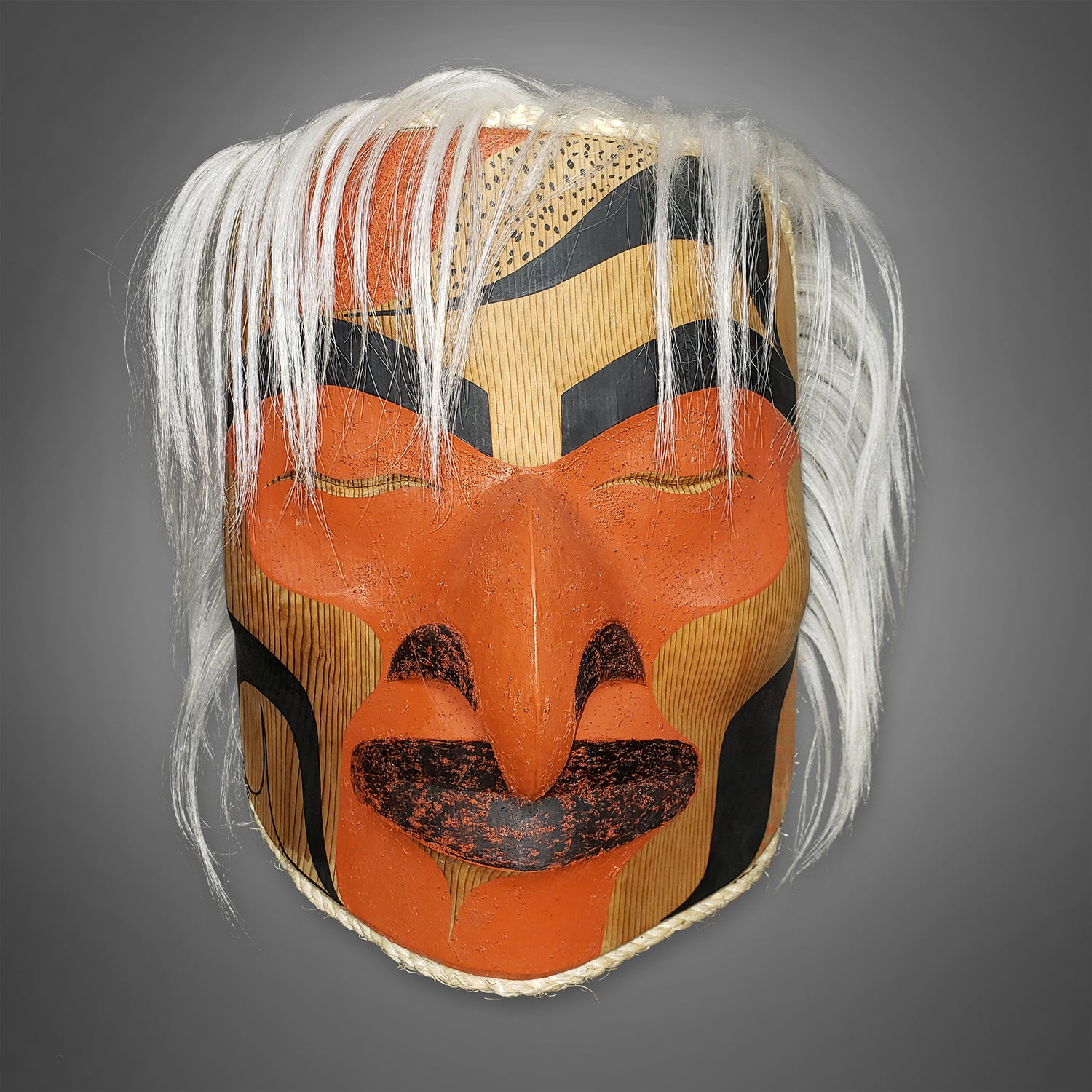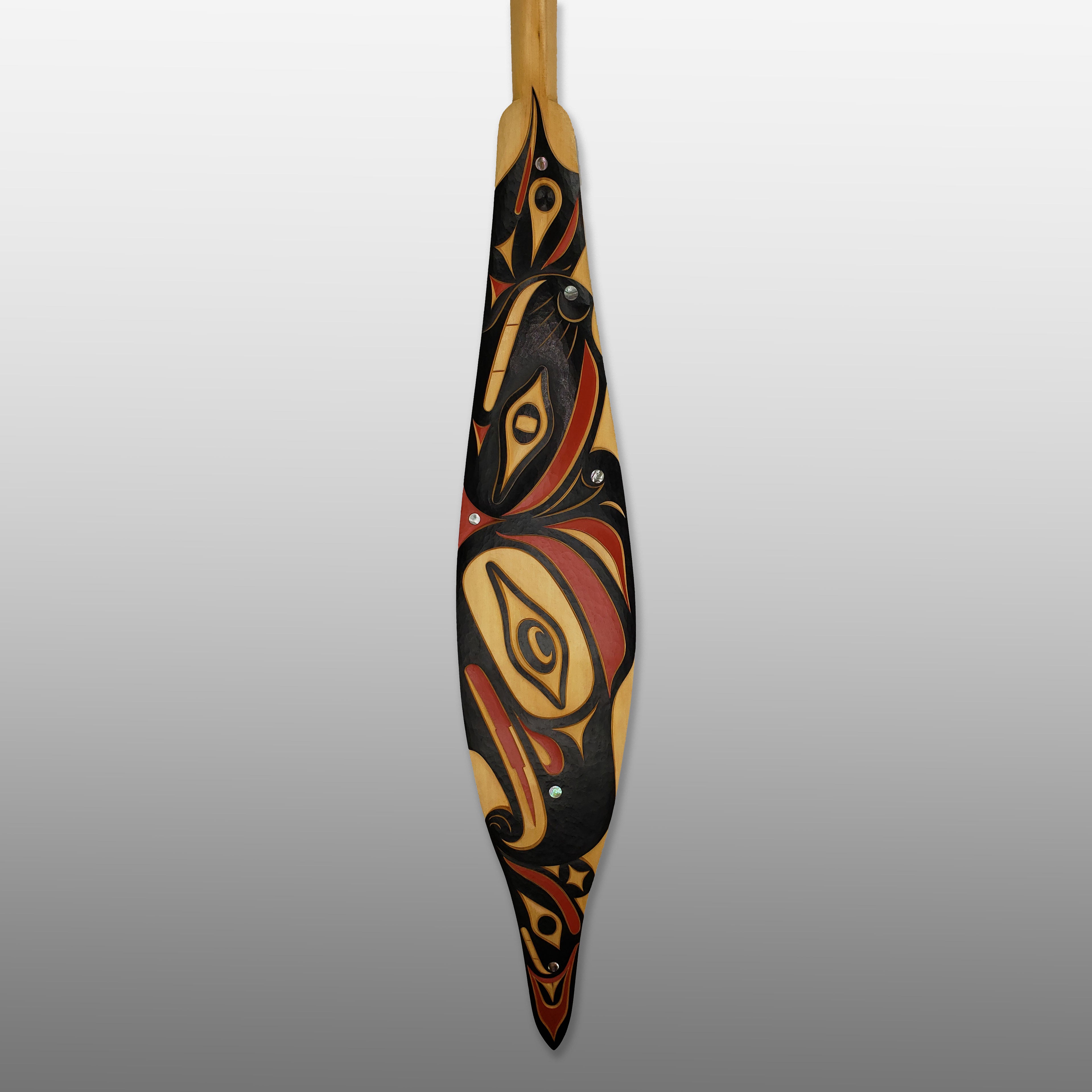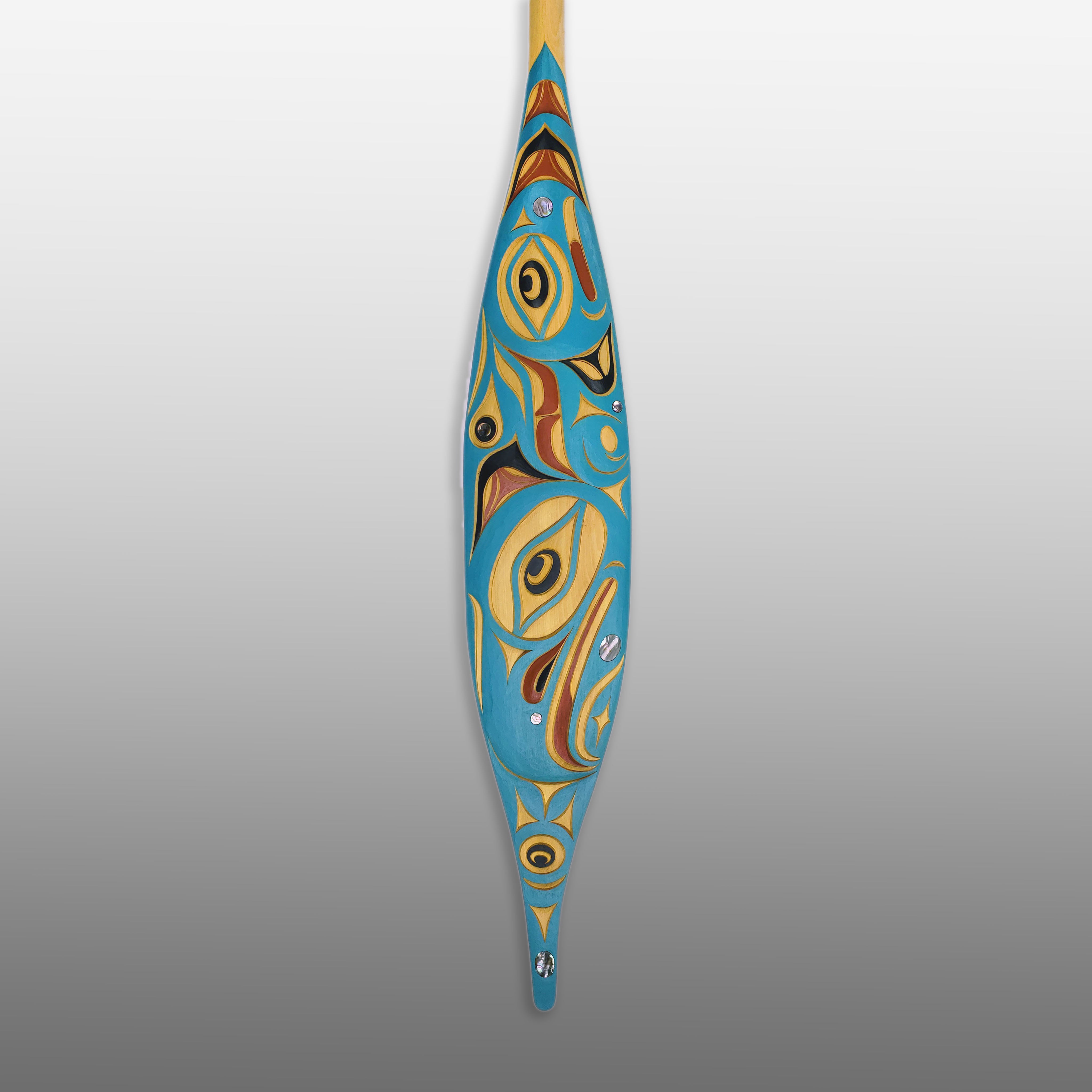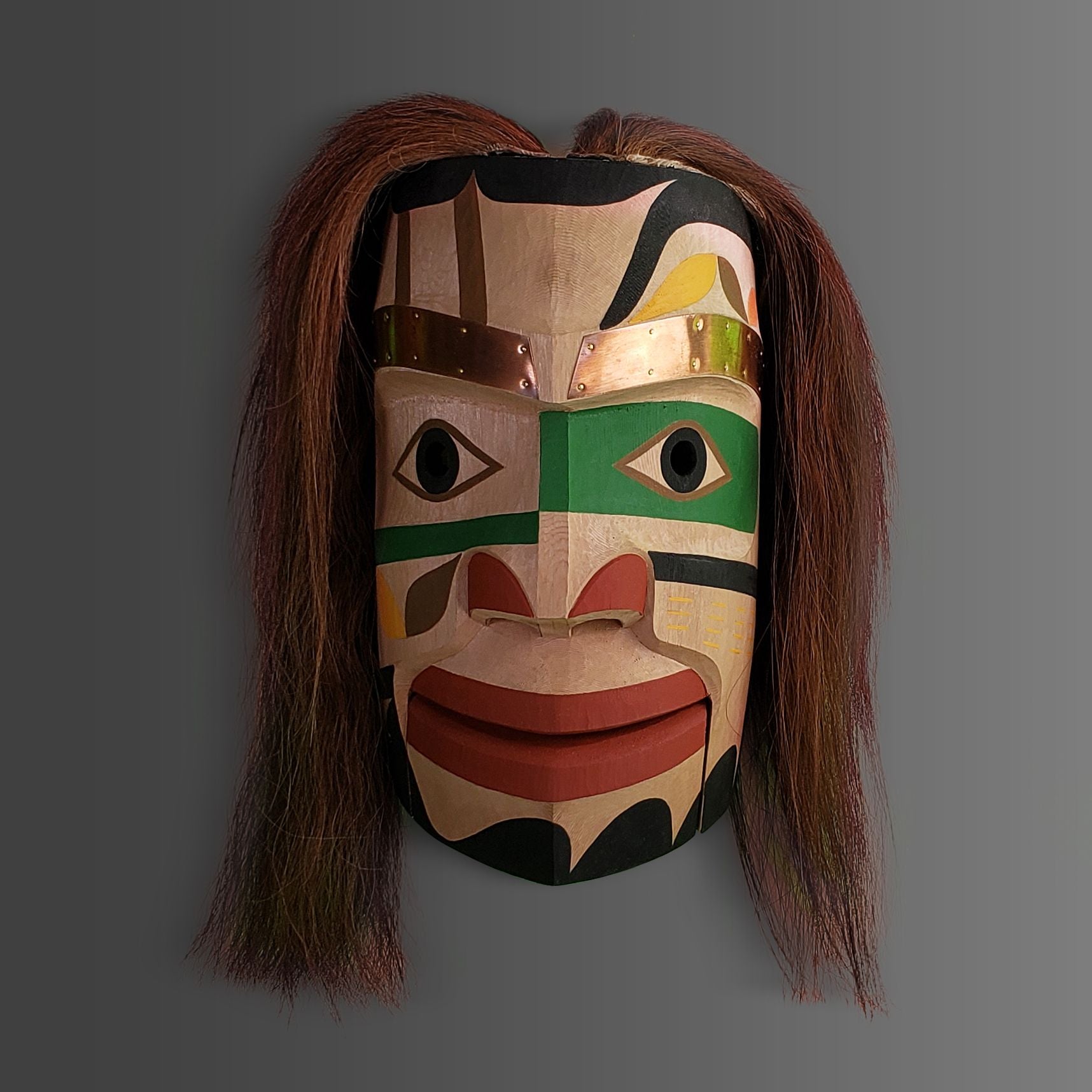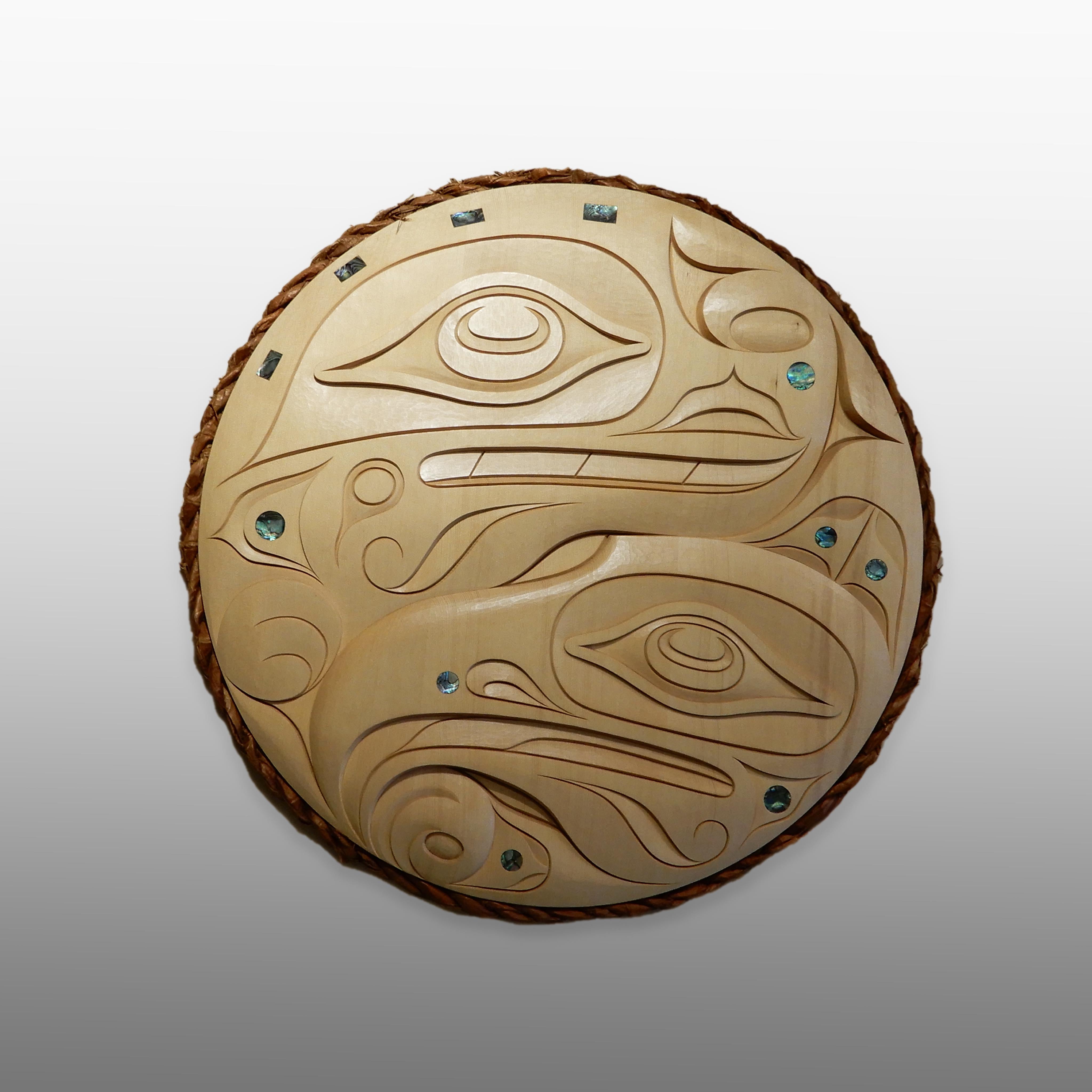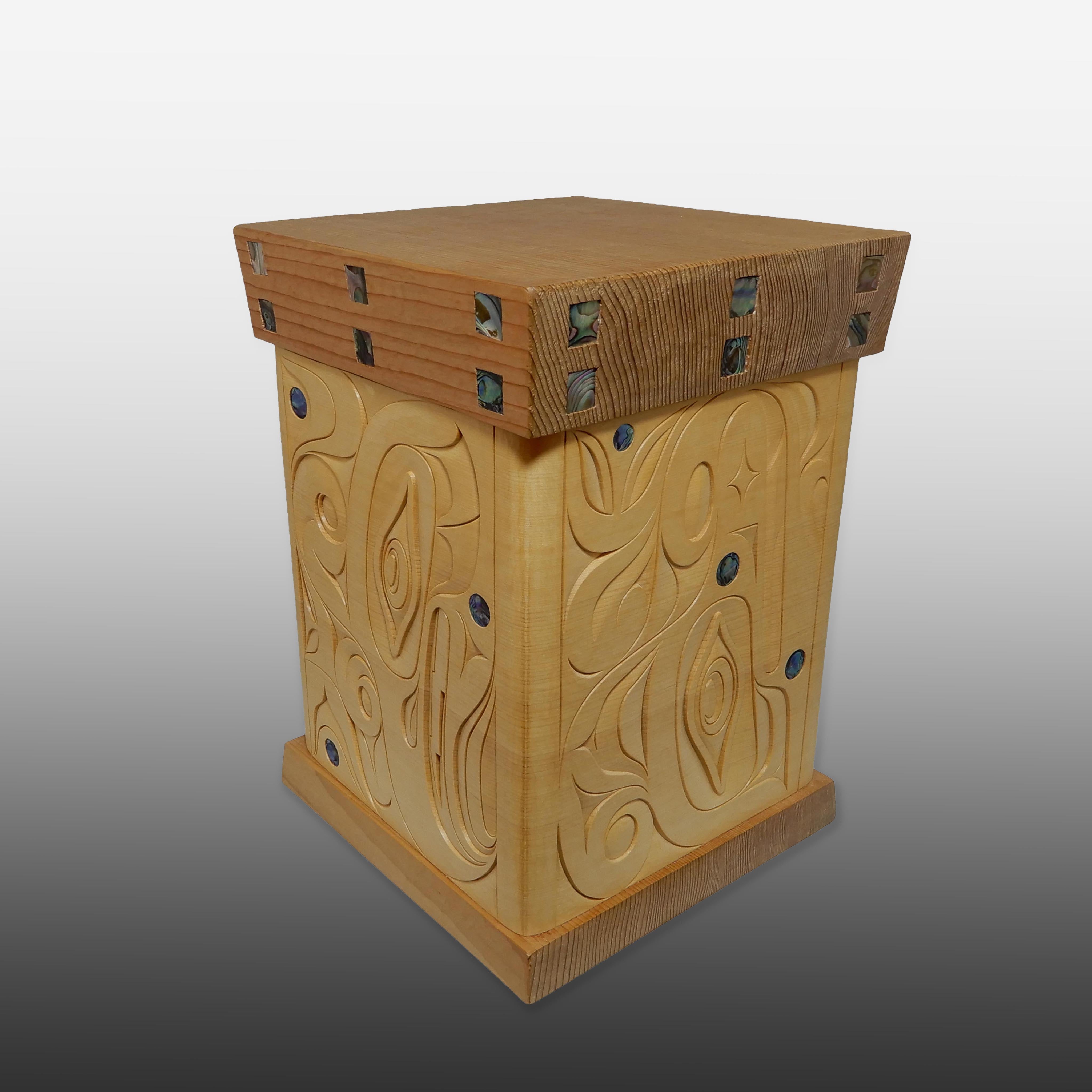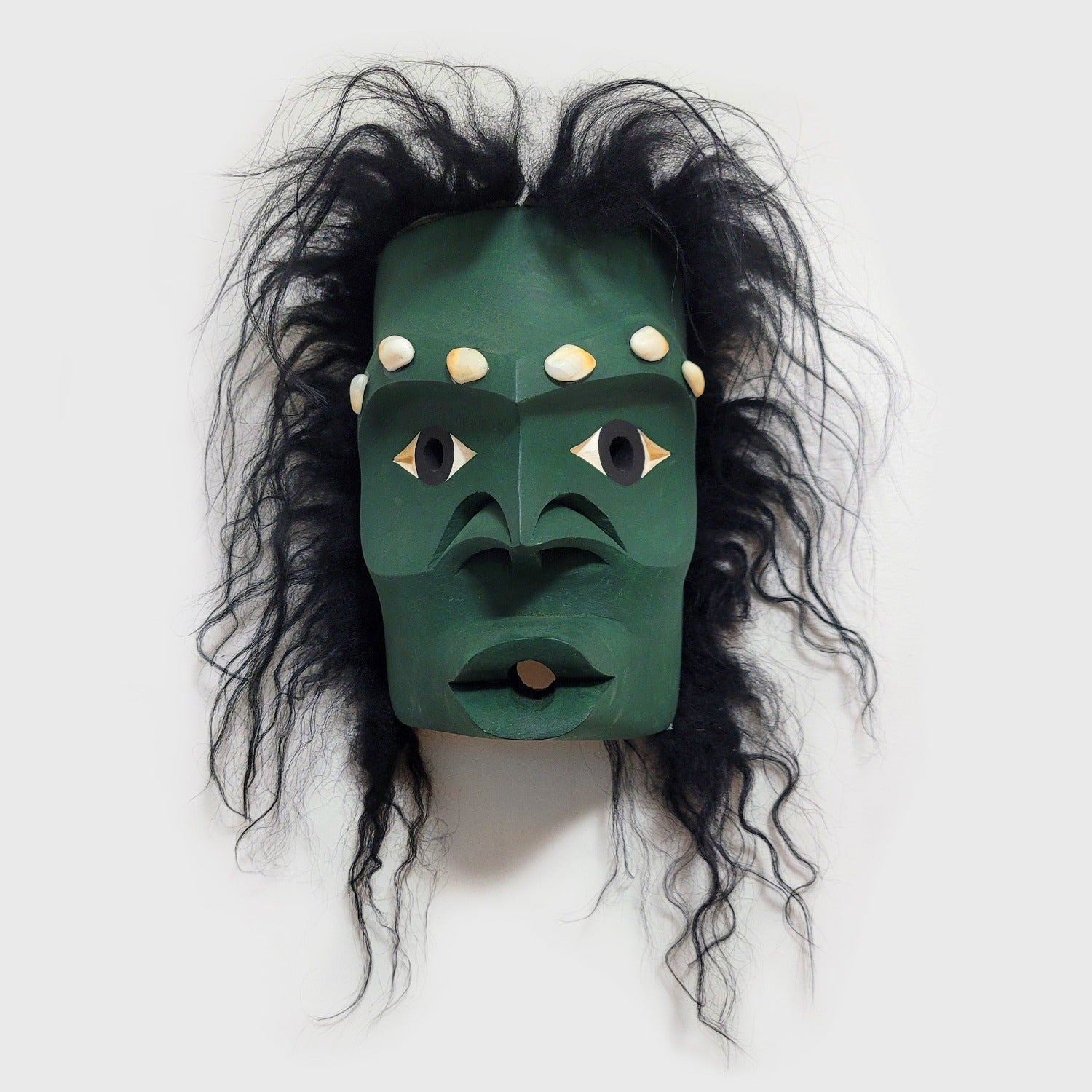Nuu-chah-nulth Art
The original inhabitants of the West Coast of Vancouver Island in BC are known as the Nuu-Chah-Nulth, a collective term for several tribes in the area. The area was previously more commonly referred to as “Nootka”, which originated as a misnomer used by Captain James Cook after his arrival to the area by ship. The Nuu-chah-nulth Nation stretches along the Pacific Ocean from Brooks Peninsula on Northern Vancouver Island to the U.S. Olympic Peninsula.

The highlighted area is an approximation of the territory of the Nuu-chah-nulth Nation, but does not represent a definitive boundary or border.
Nuu-chah-nulth art is traditionally bold and uncluttered, less elaborate than other Northwest Coast art forms, flowing with flexible formlines, and often natural in finish. Colors used may include black, red, white, yellow, orange, green, and rich blue. West Coast style is perhaps most easily identified by its abstracted and angular geometric designs with hard edges. Art and other cultural objects traditional to the Nuu-chah-nulth peoples include totem poles, masks, ocean canoes, baskets, regalia, paddles, and more, much of which are created for potlatching. These objects often depict semi-realistic animals, mythological creatures such as a Thunderbird or Lightning Snake, and humans, which might merge or intersect to tell a traditional story, legend, or myth.
Whaling
The Nuu-chah-nulth are considered the only Northwest Coast First Nation to actively hunt whales. Whaling provided essential food and tool-making resources including blubber, meat, bone, gut, baleen, and sinew. But it was also a challenging and dangerous undertaking, and for this reason whaling was considered a prestigious and noble task. Prior to a hunt, the whaler would undergo months of physical, mental, and spiritual preparedness. The significance of this hunt manifested in other parts of Nuu-chah-nulth life. For example, the angular characteristics of Nuu-chah-nulth carving are considered to reference or mimic the bow of a canoe. This can be perhaps most clearly identified in carved portrait masks.
Masks
West Coast or Nuu-chah-nulth style masks are traditionally carved from red or yellow cedar. They typically have a striking profile, geometric, with hard edges and two planes on either side of the face that meet in the middle. A mask will usually be carved with pronounced angular brows, strong noses, large eyes, protruding full lips, and black hair.
References
Gilbert, Jim and Karin Clark, Learning By Design: Pacific Northwest Coast Native Indian Art, Vol. 1, Raven Publishing Inc., 2003.
Heagle, M. “Nuu-chah-nulth / Nootka.” Stonington Gallery, https://stoningtongallery.com/tribe/nuu-chah-nulth-nootka/
Contributions
If you would like to send us comments or feedback about the information on this Nuu-chah-nulth Art page or add any further information or stories, please send us an email to info@spiritsofthewestcoast.com.








